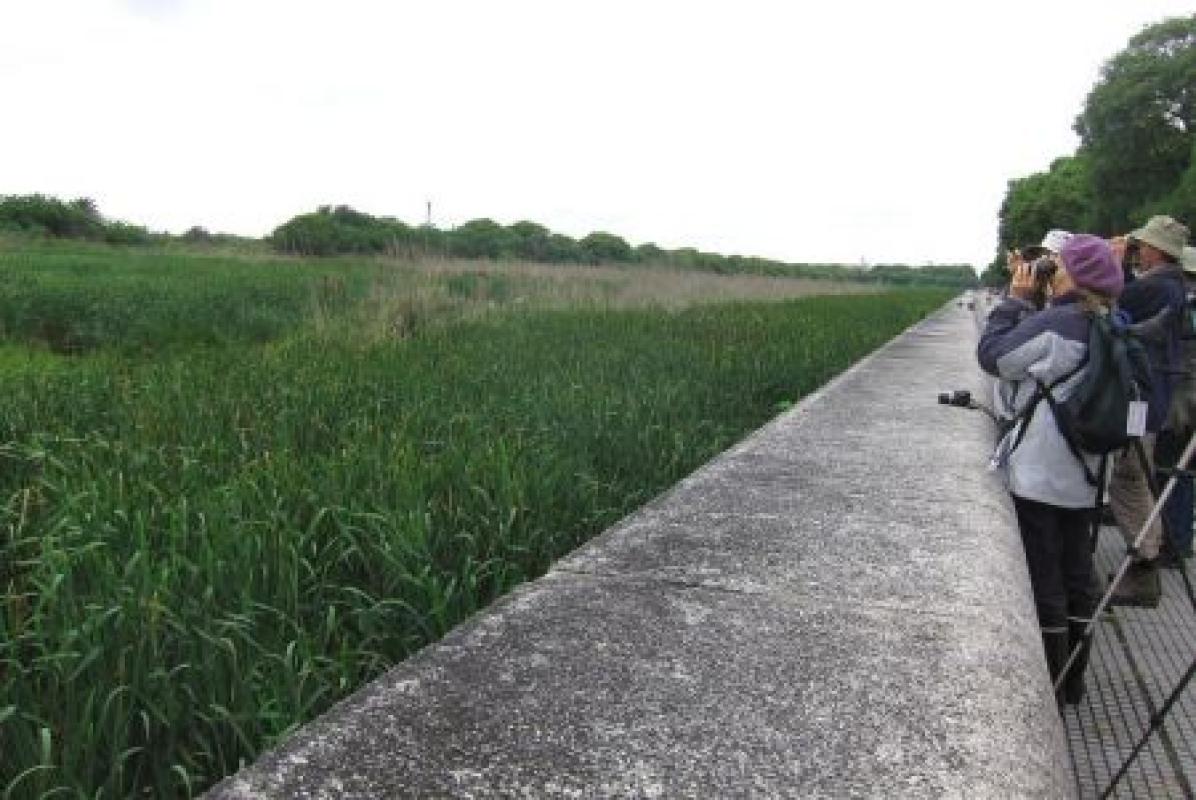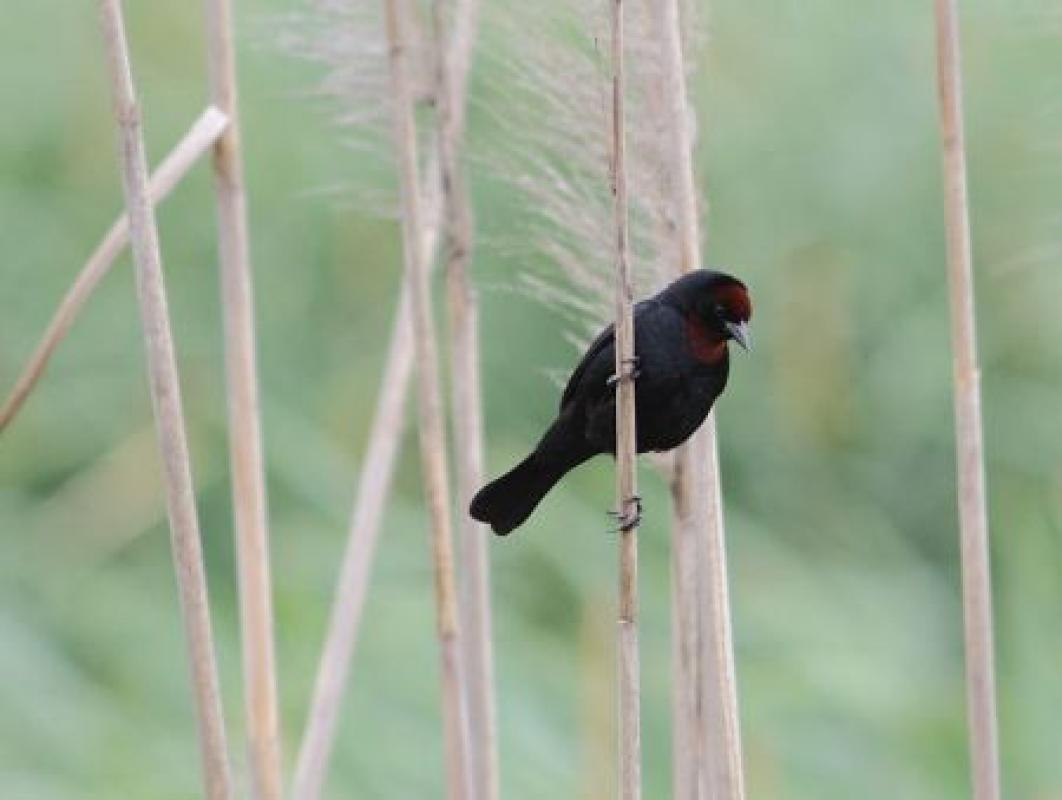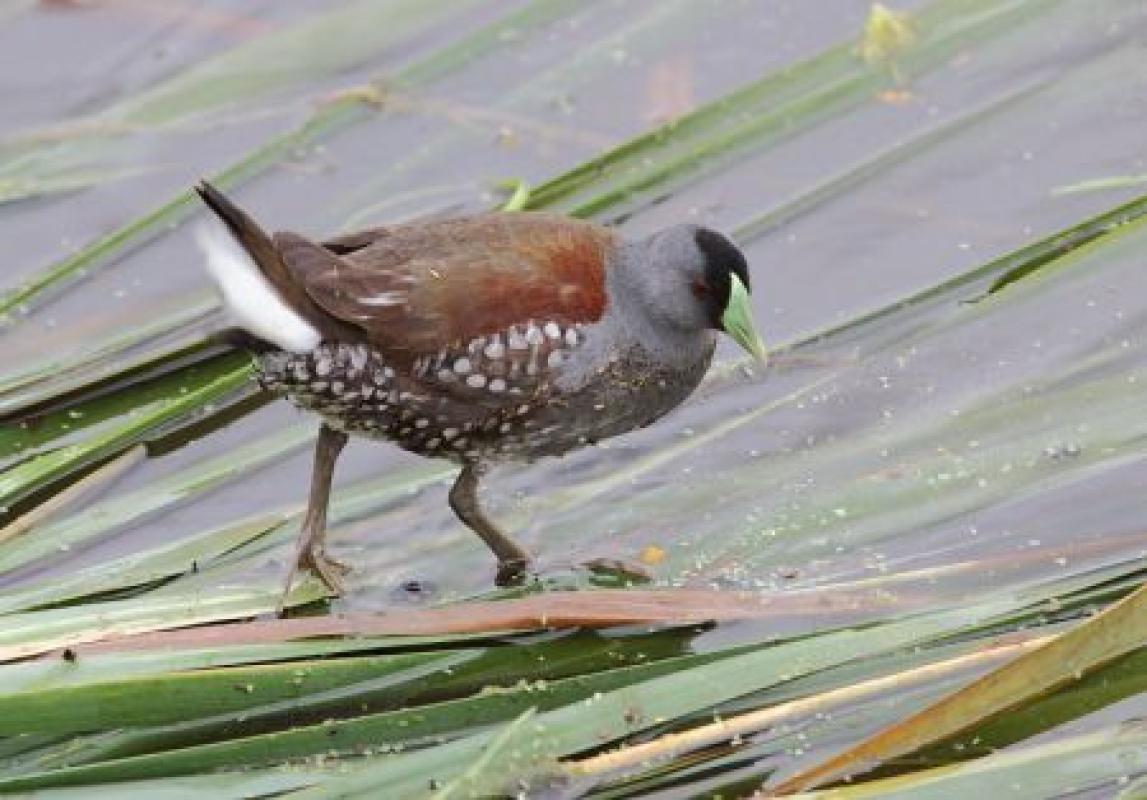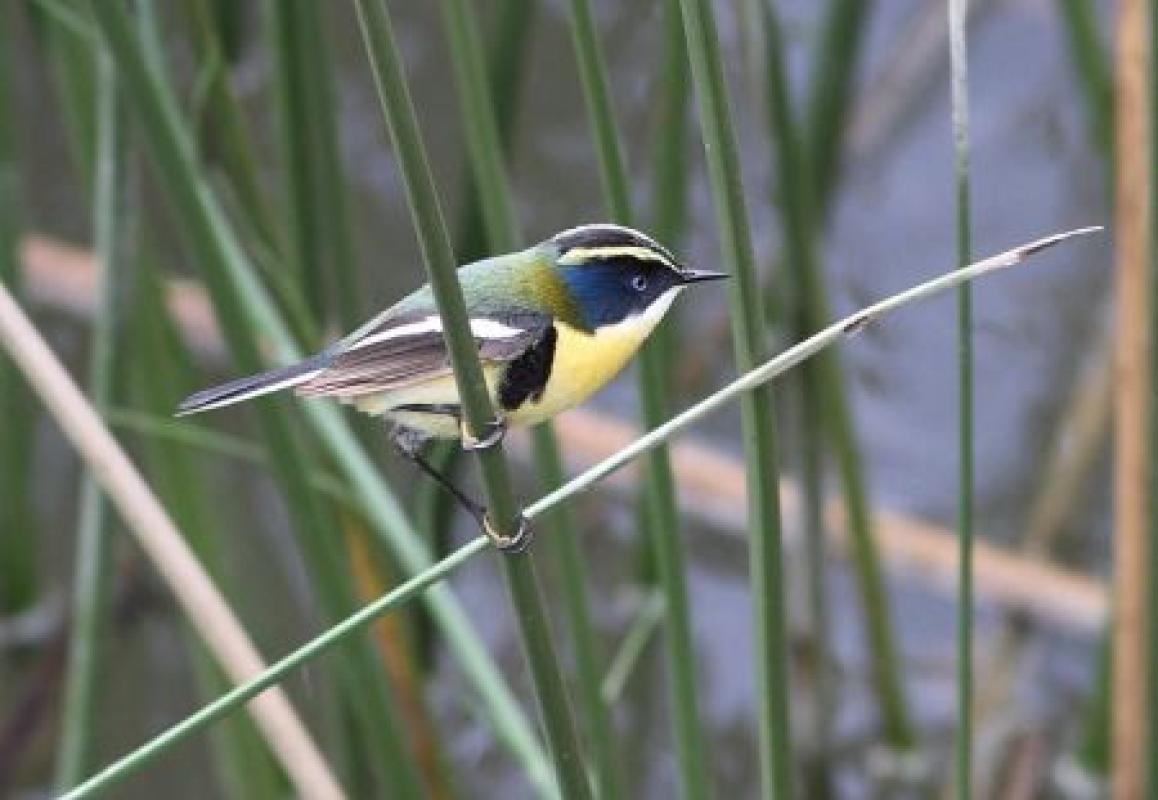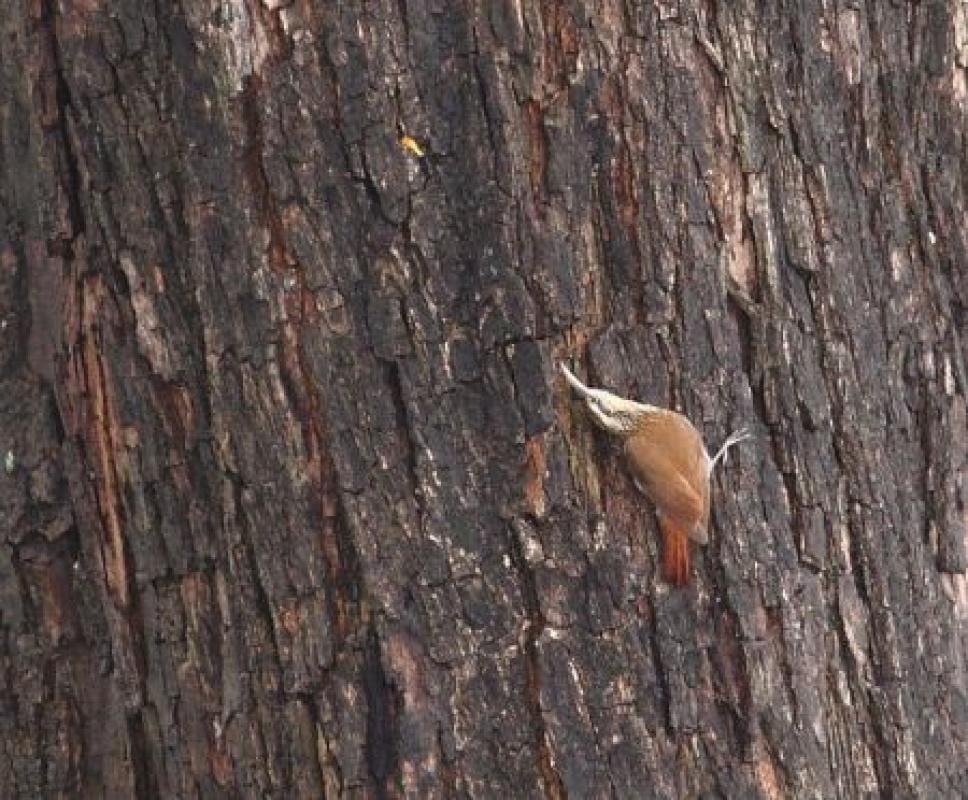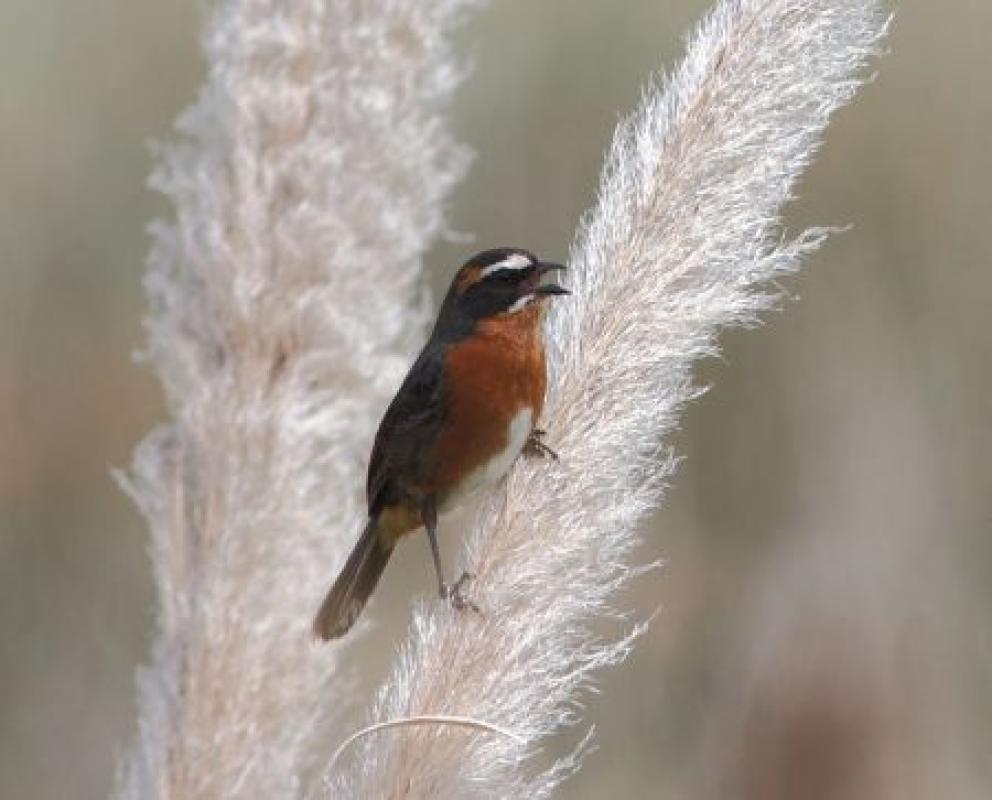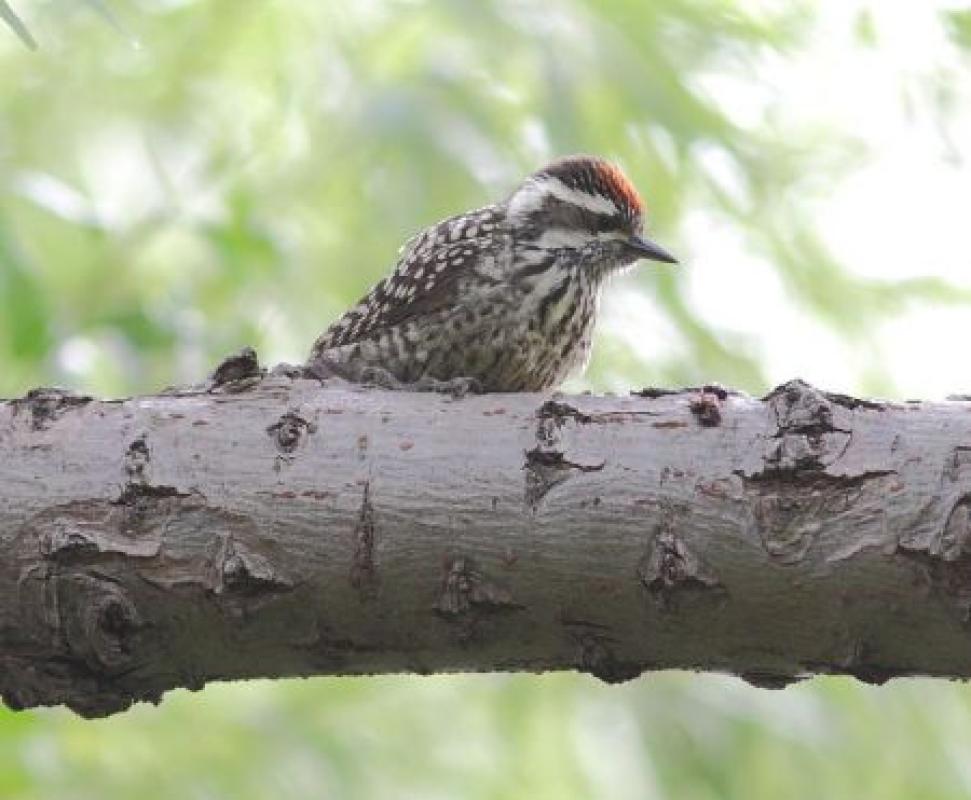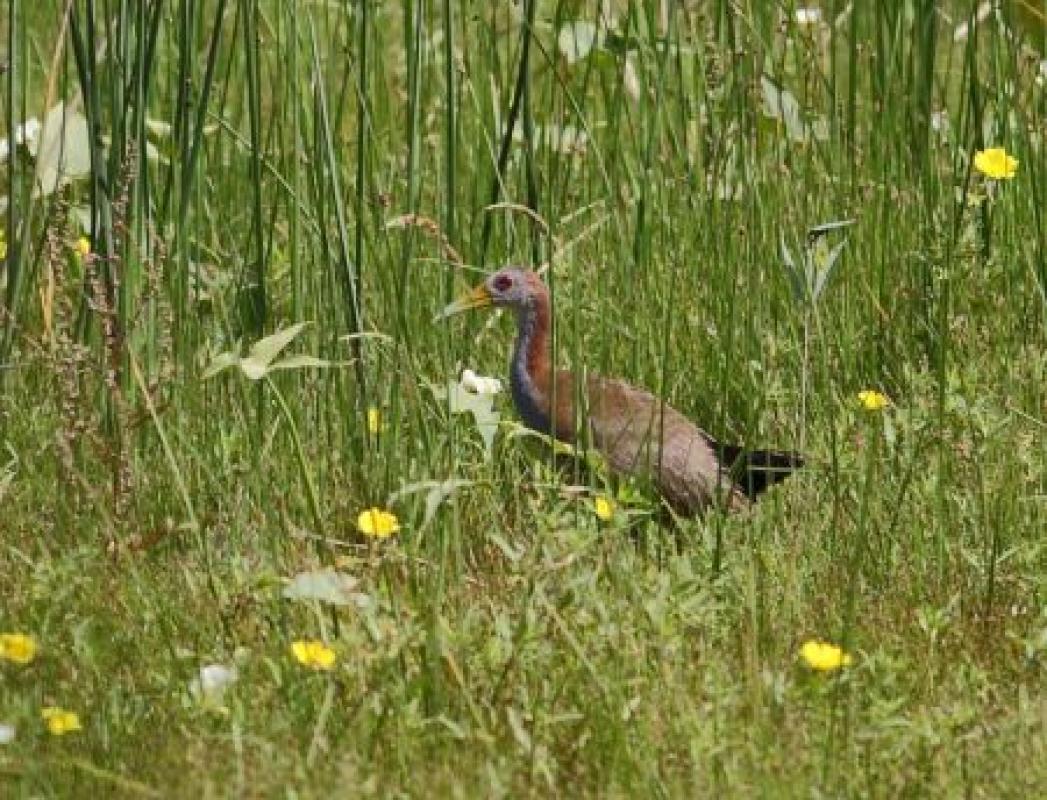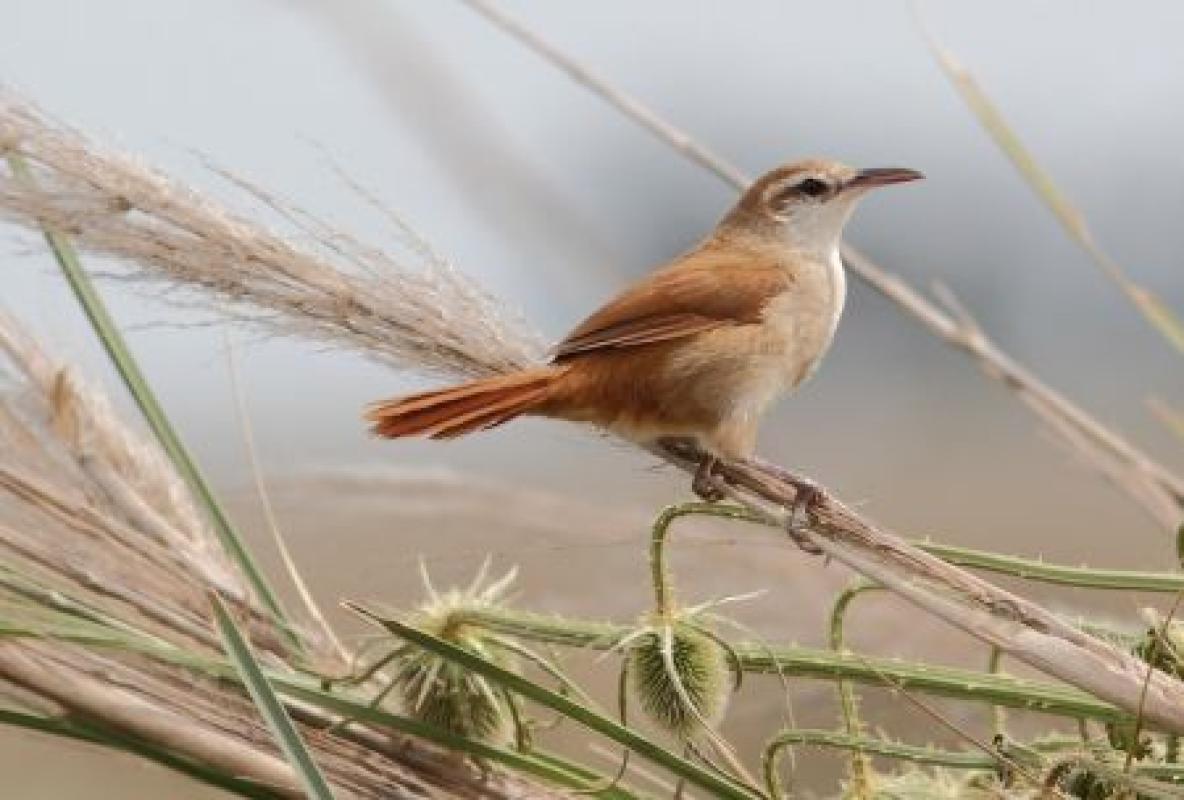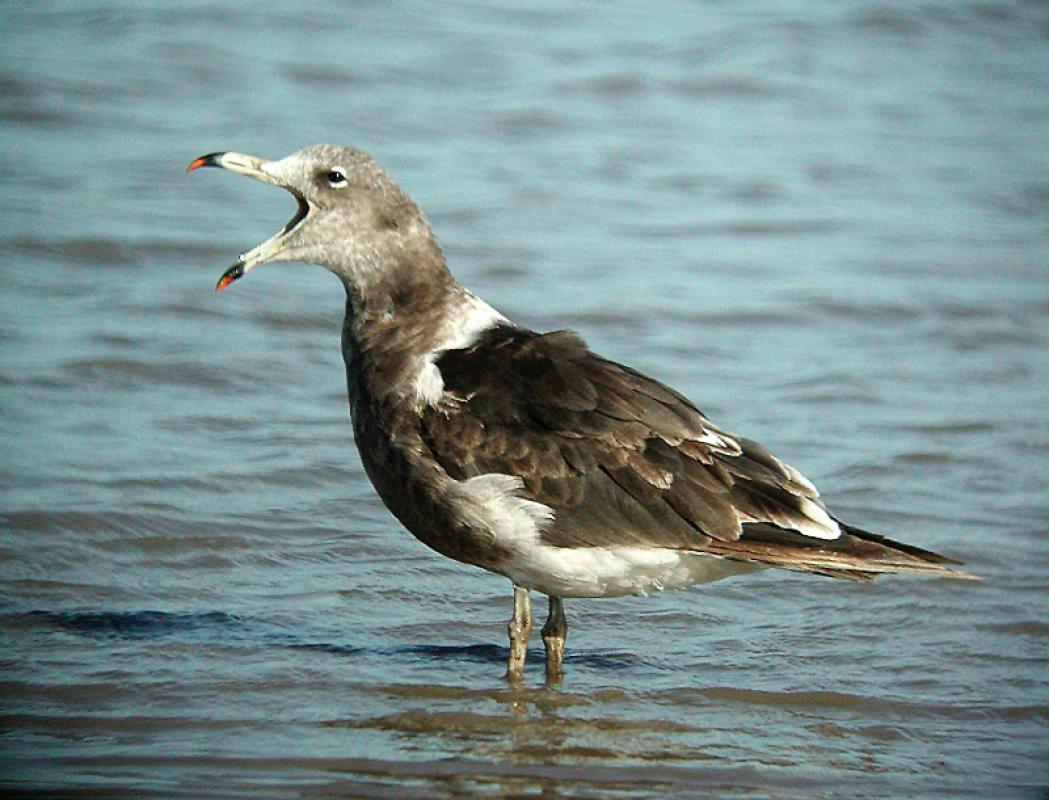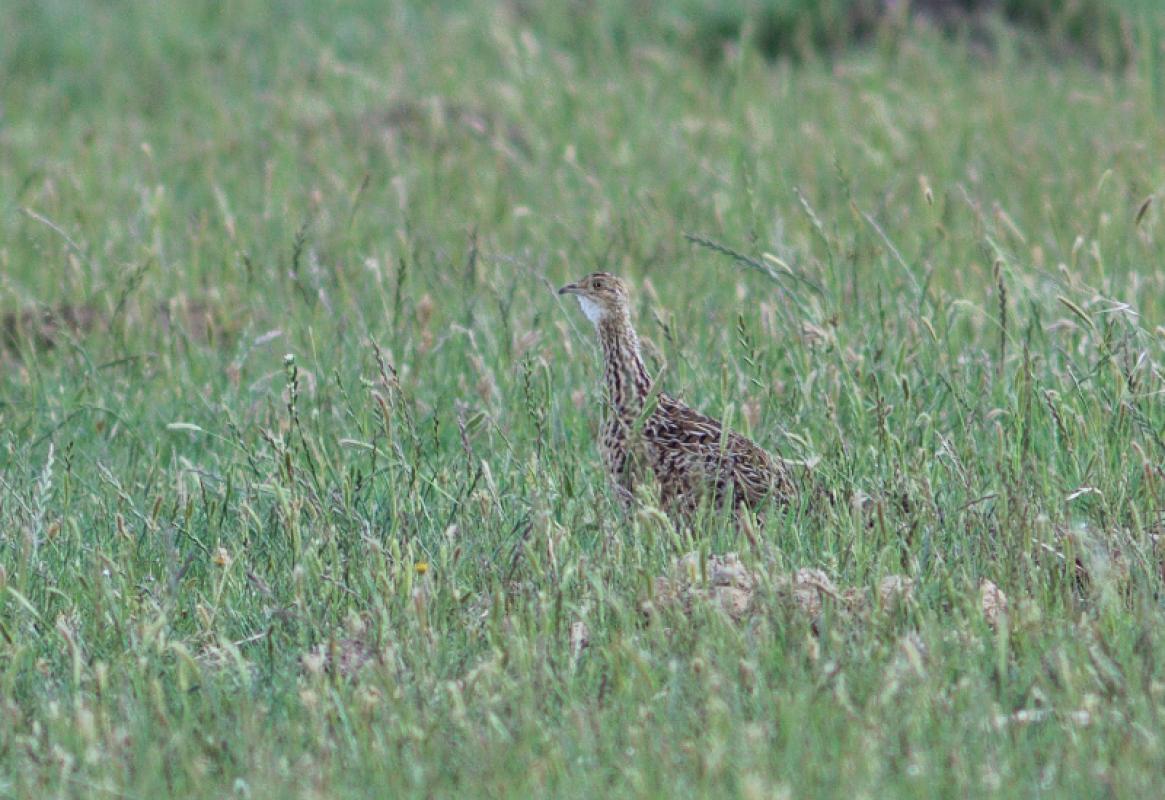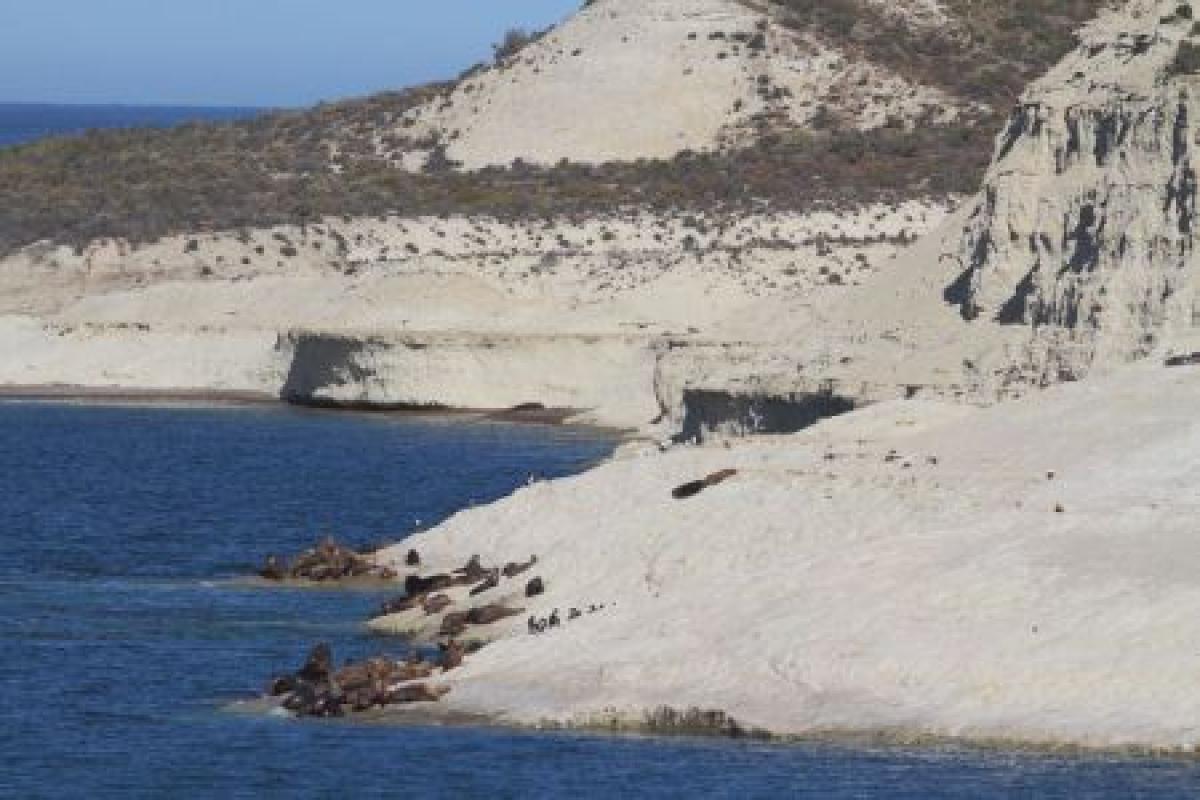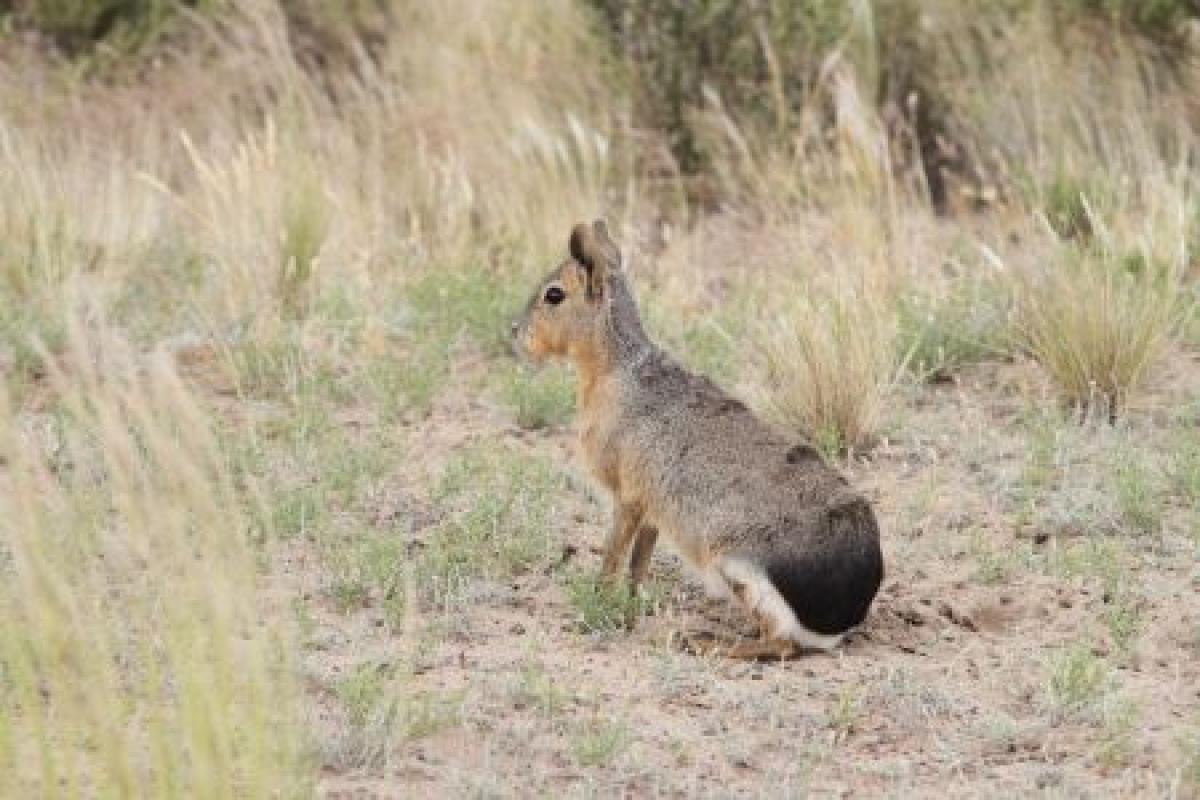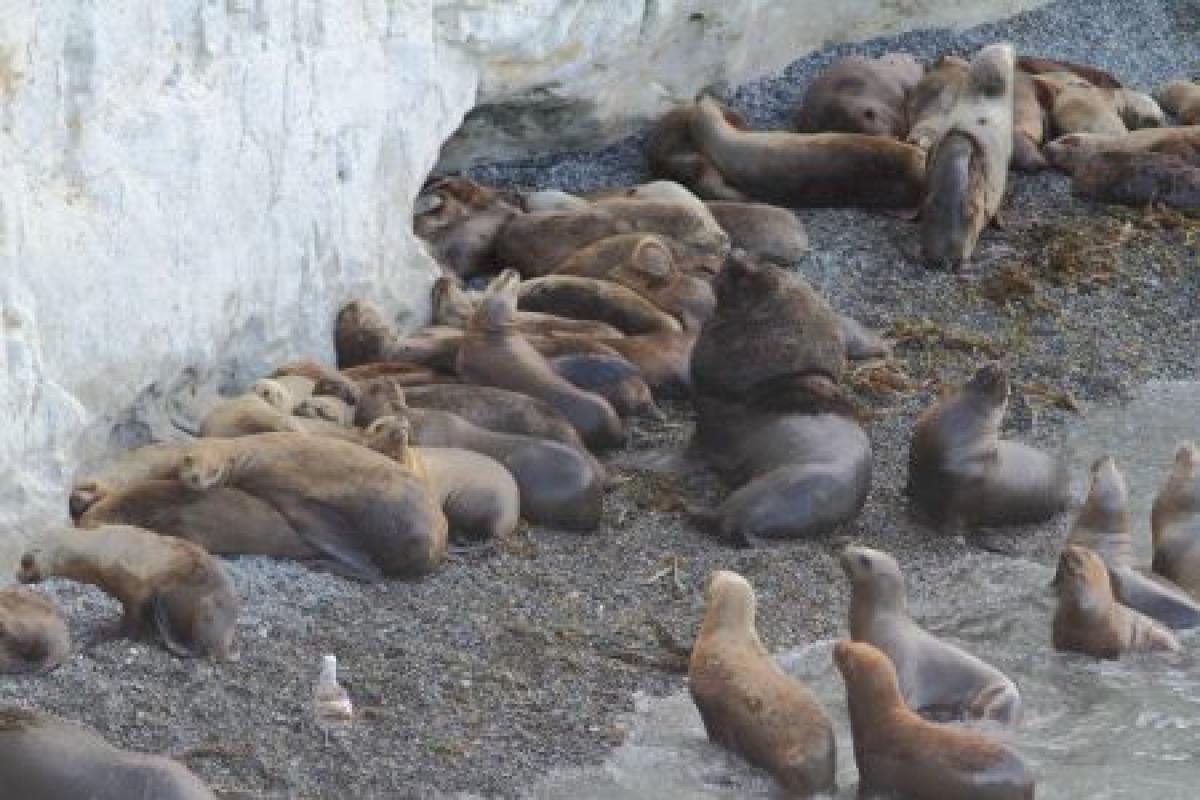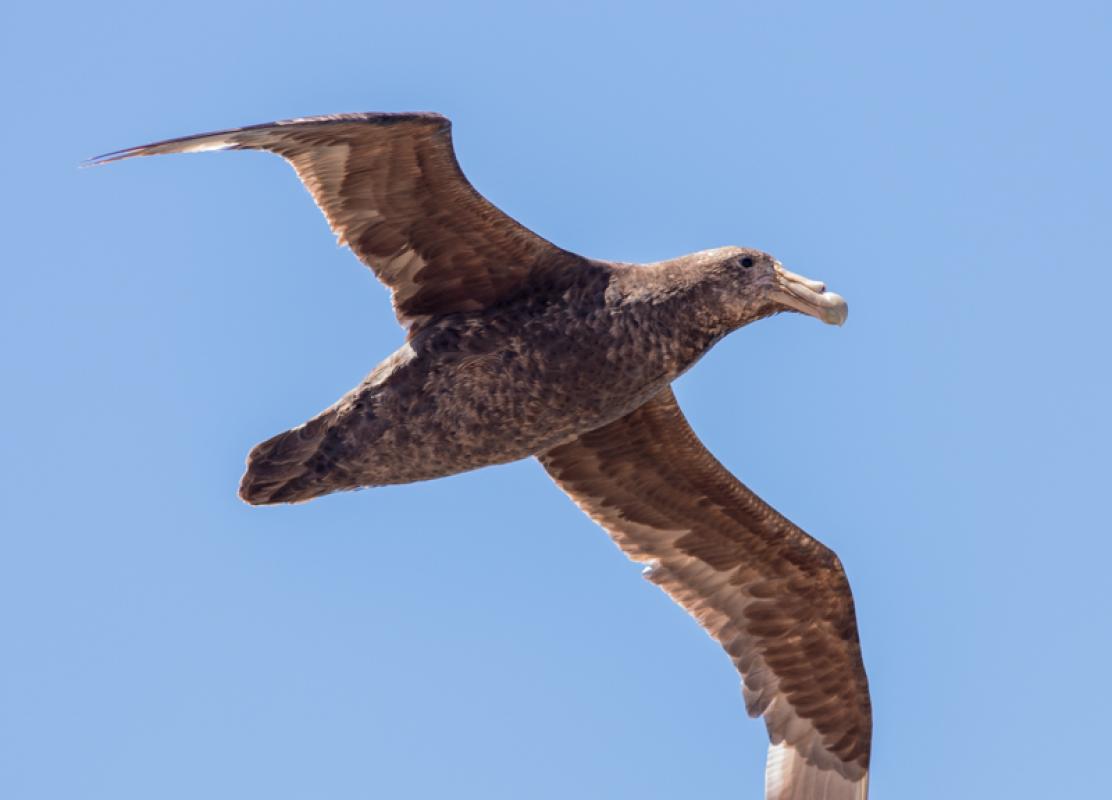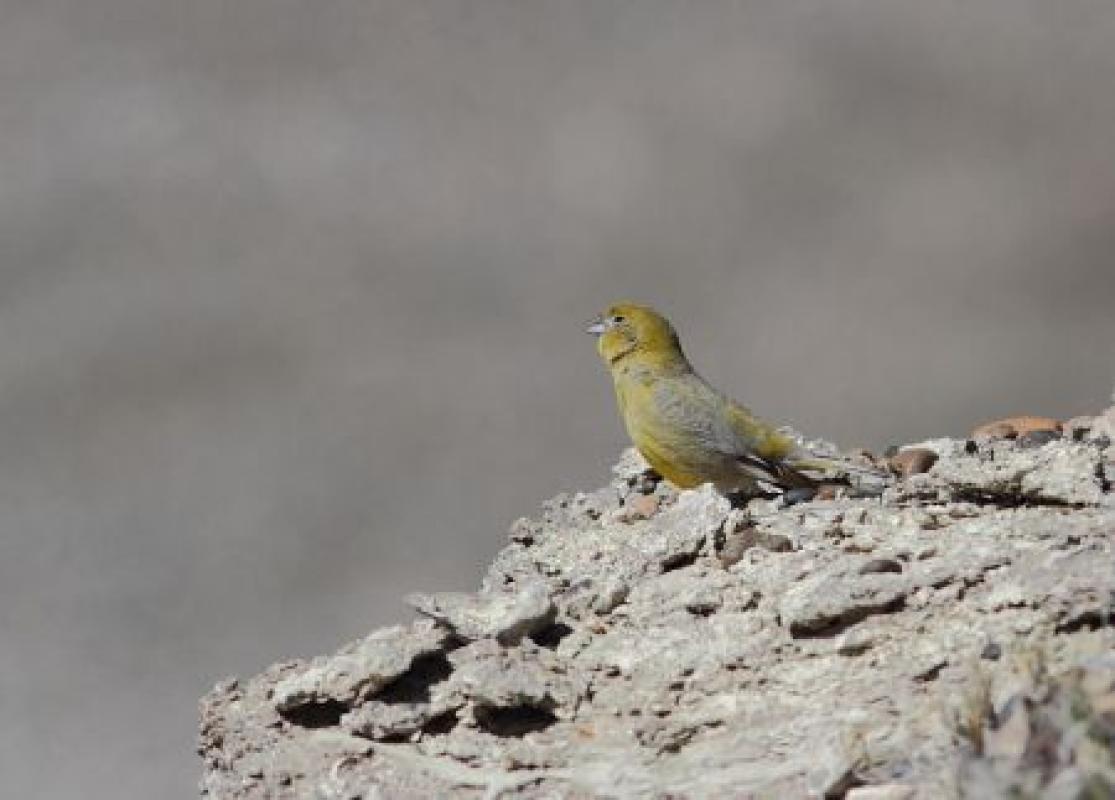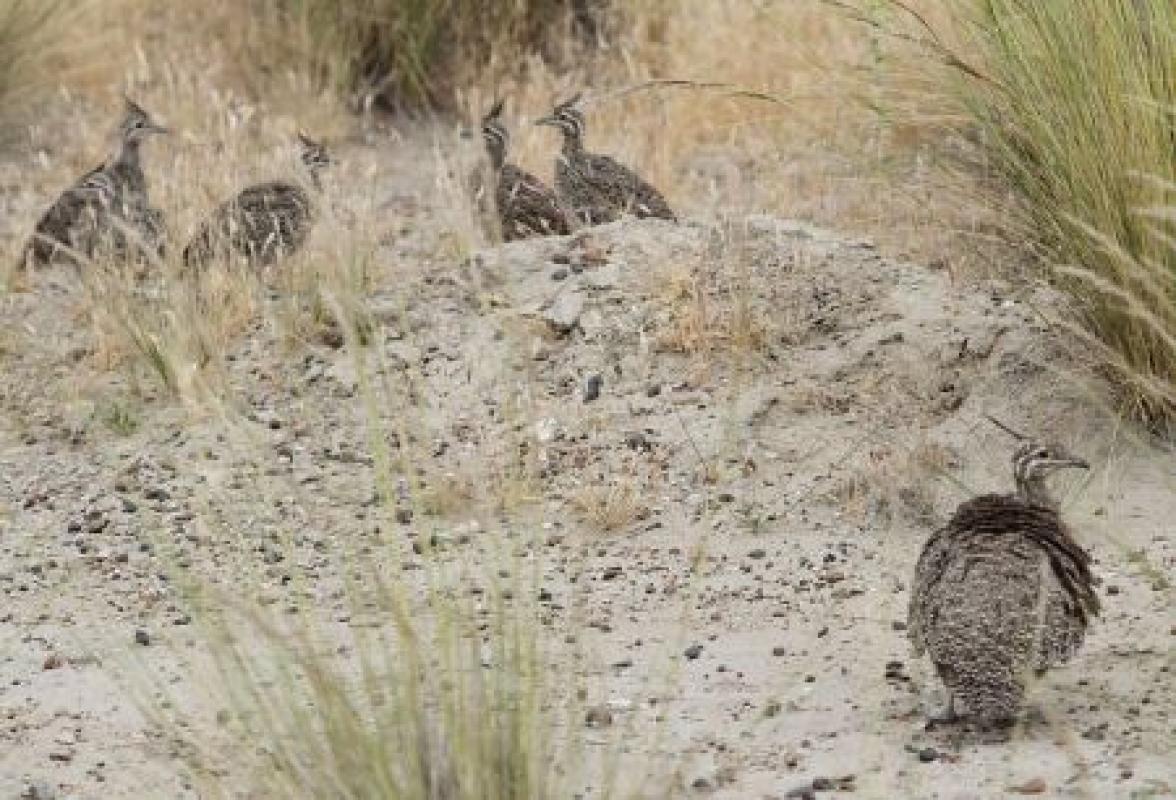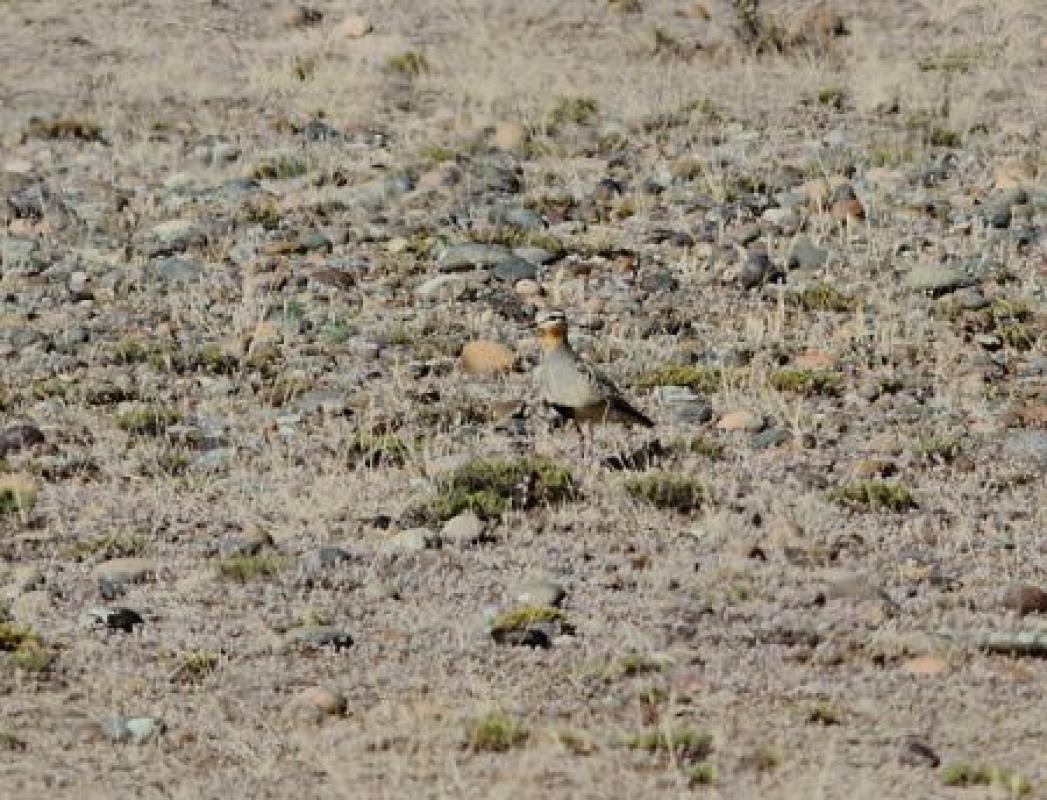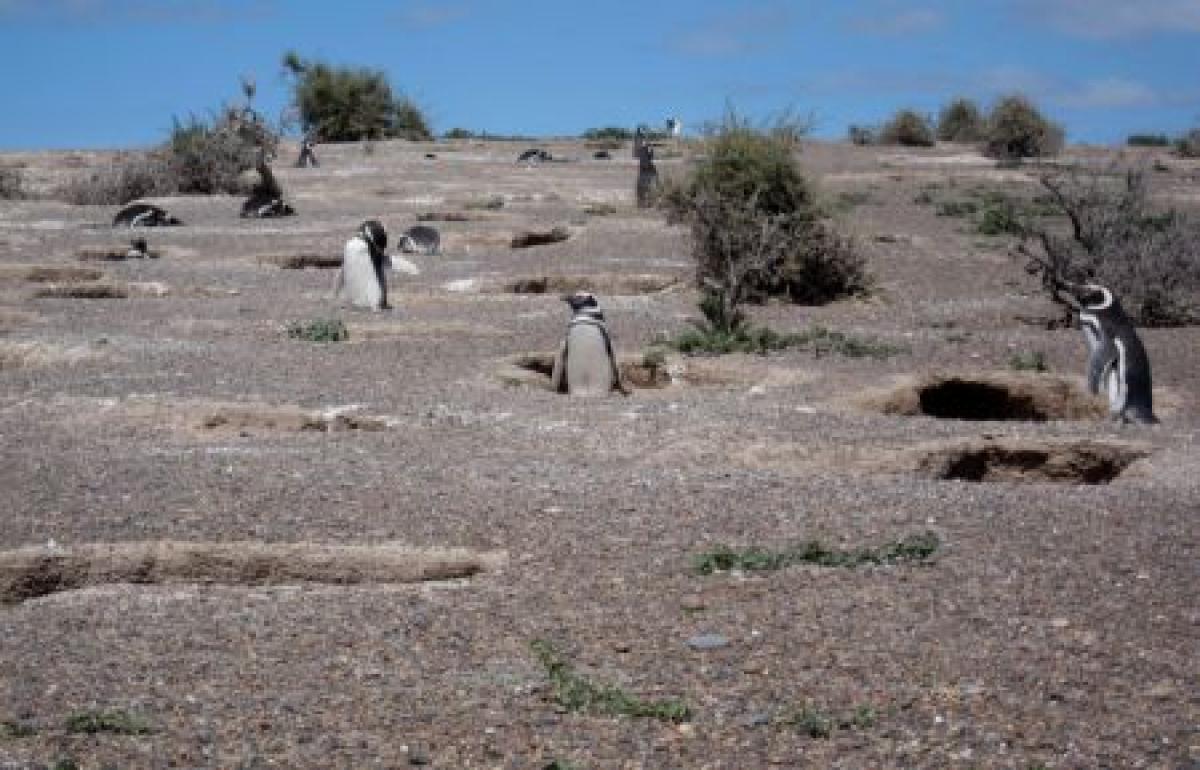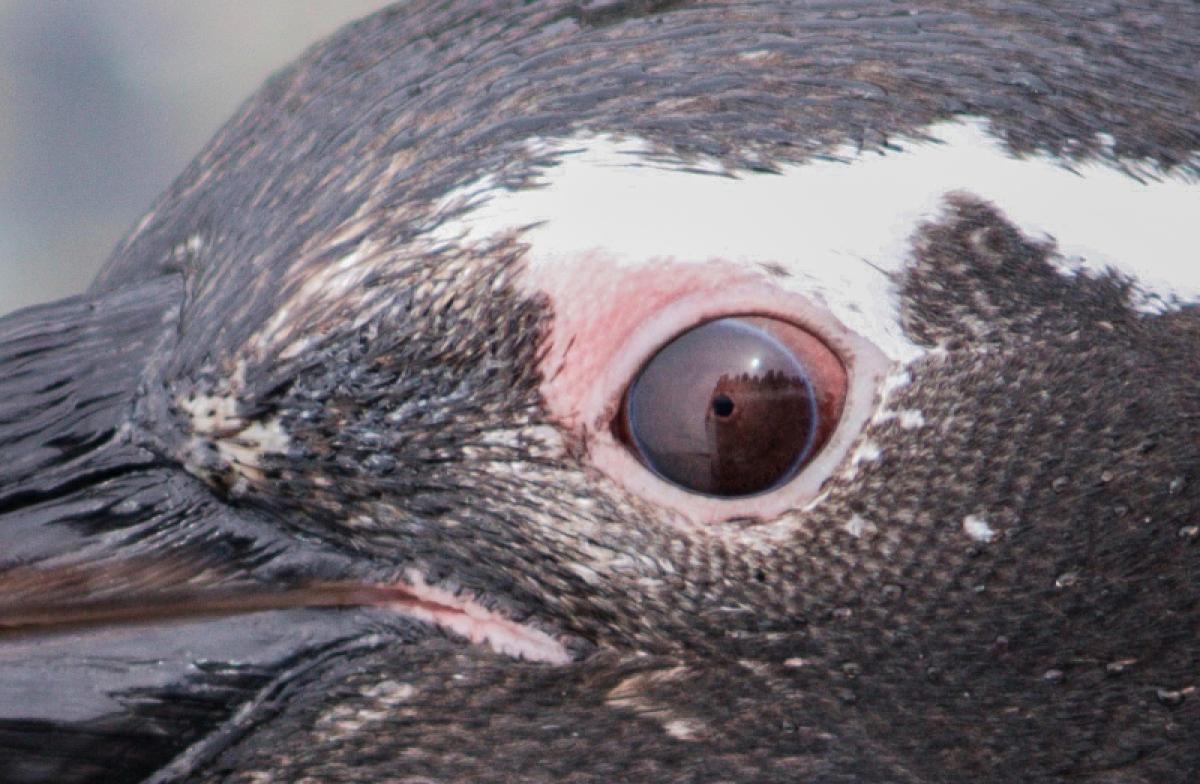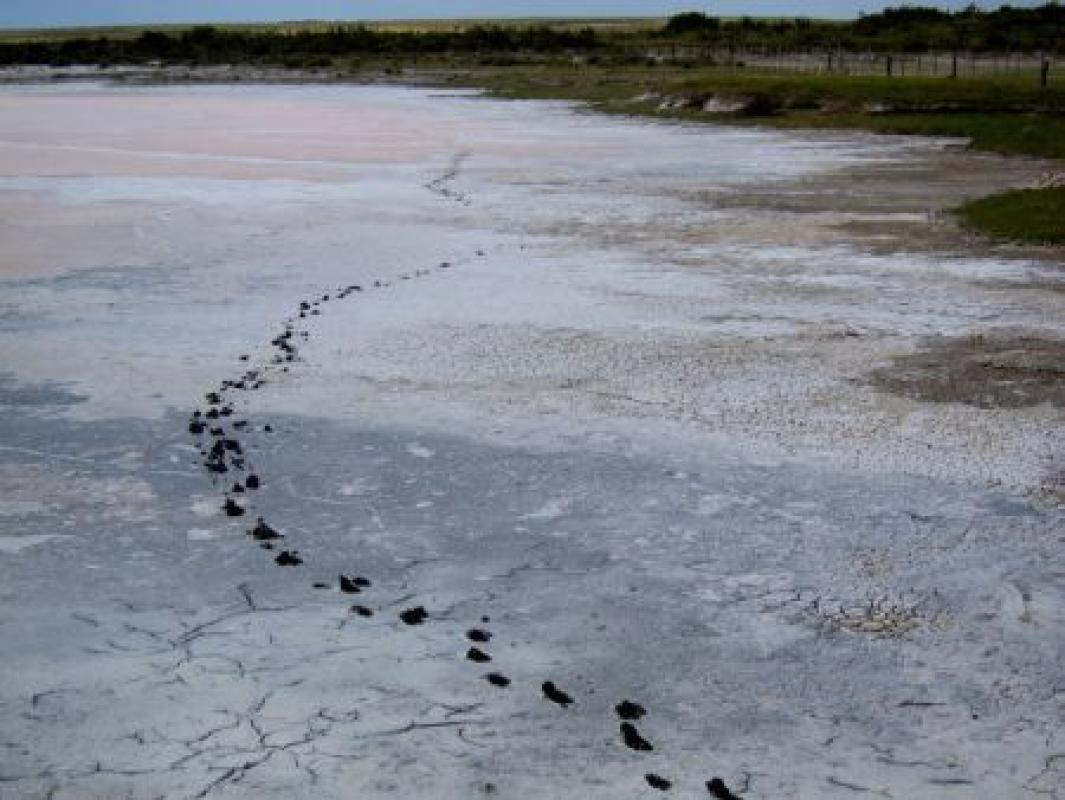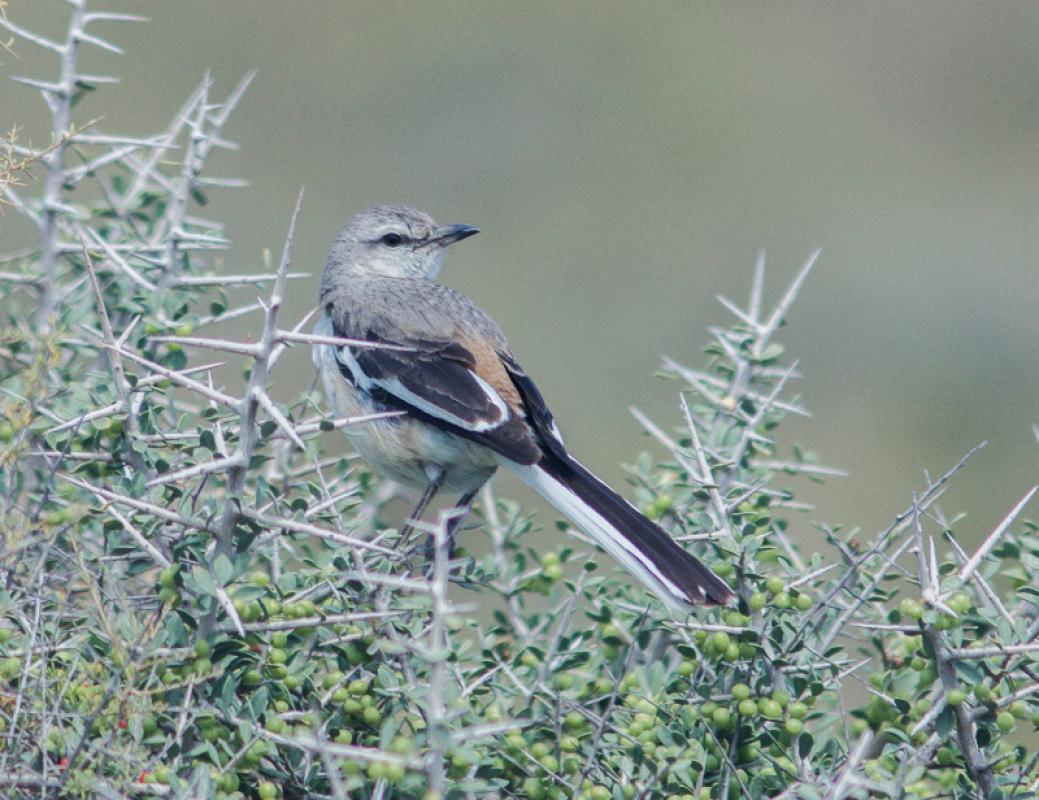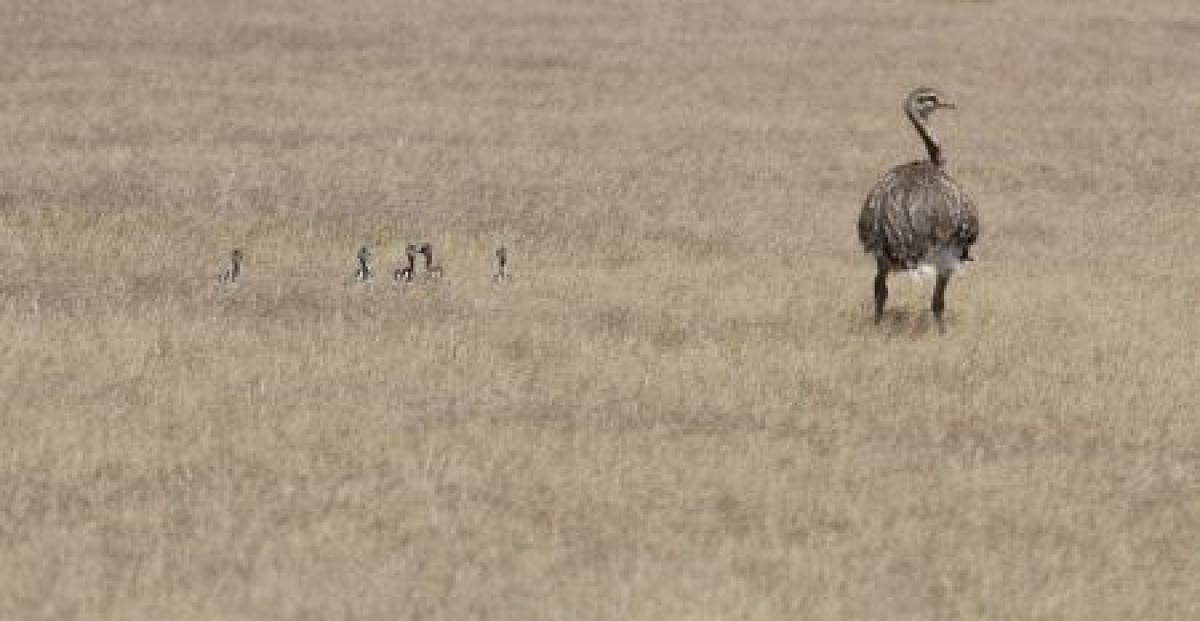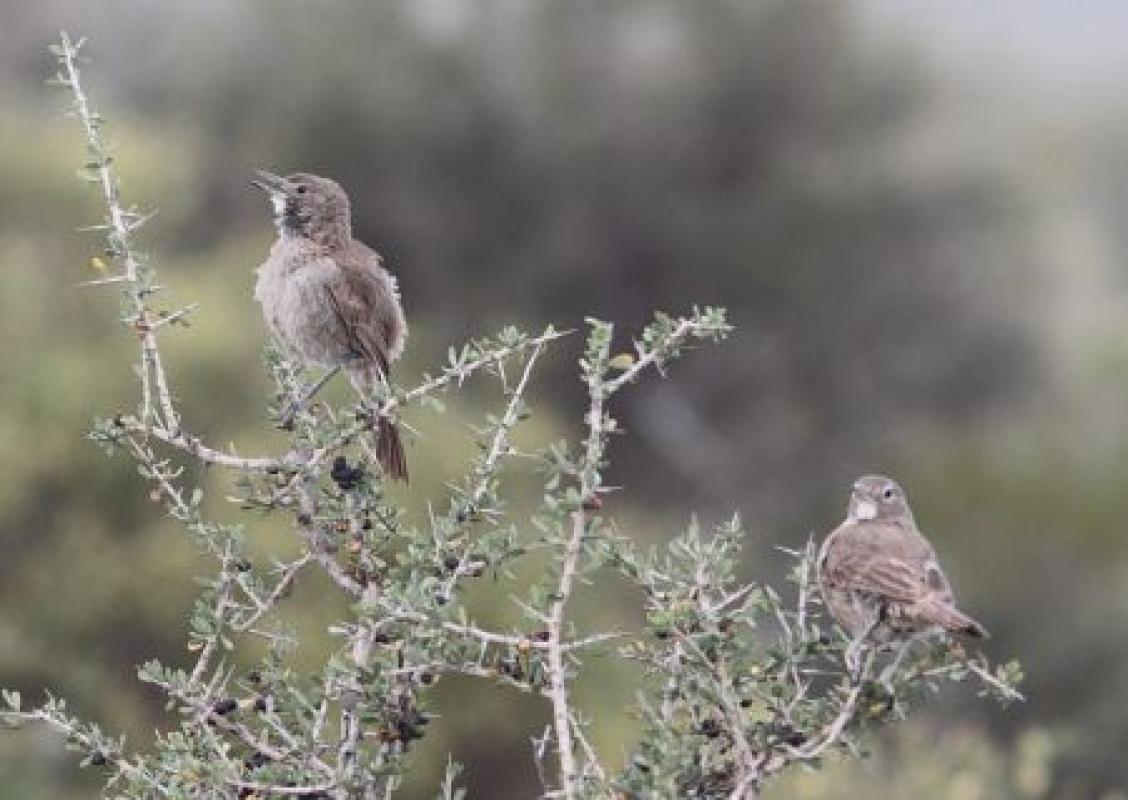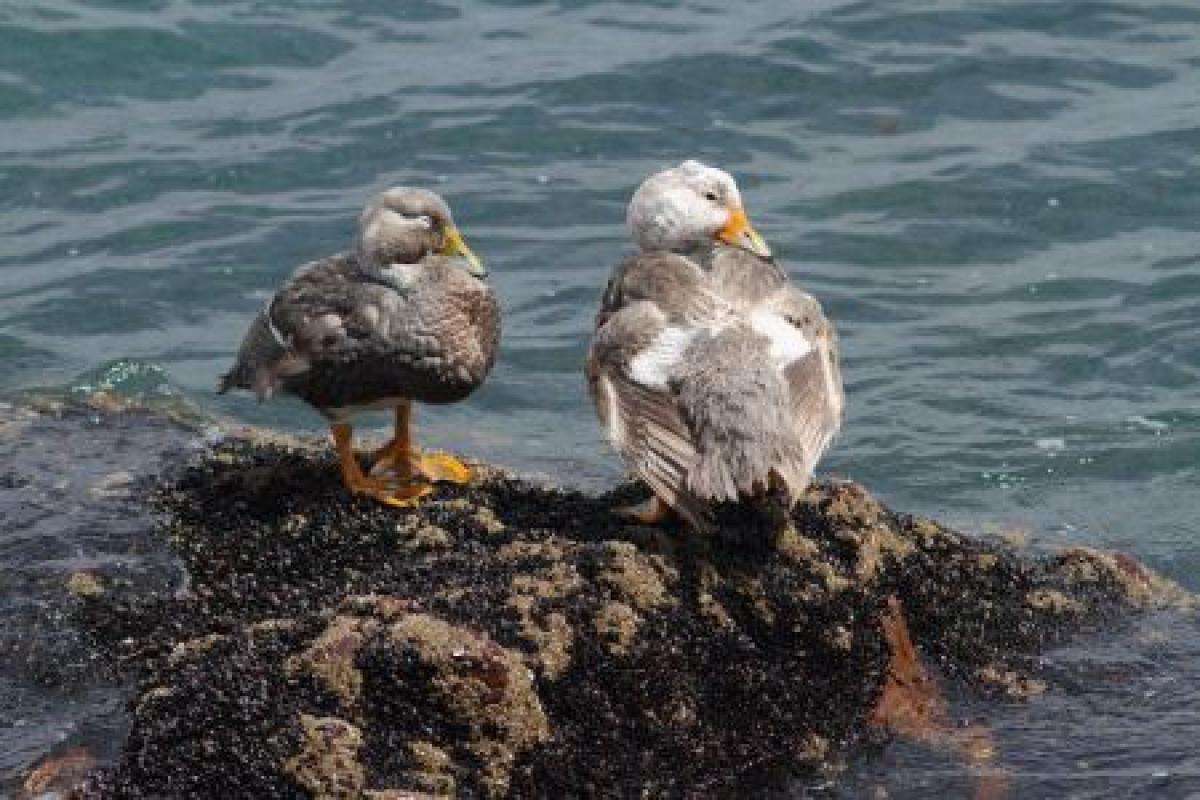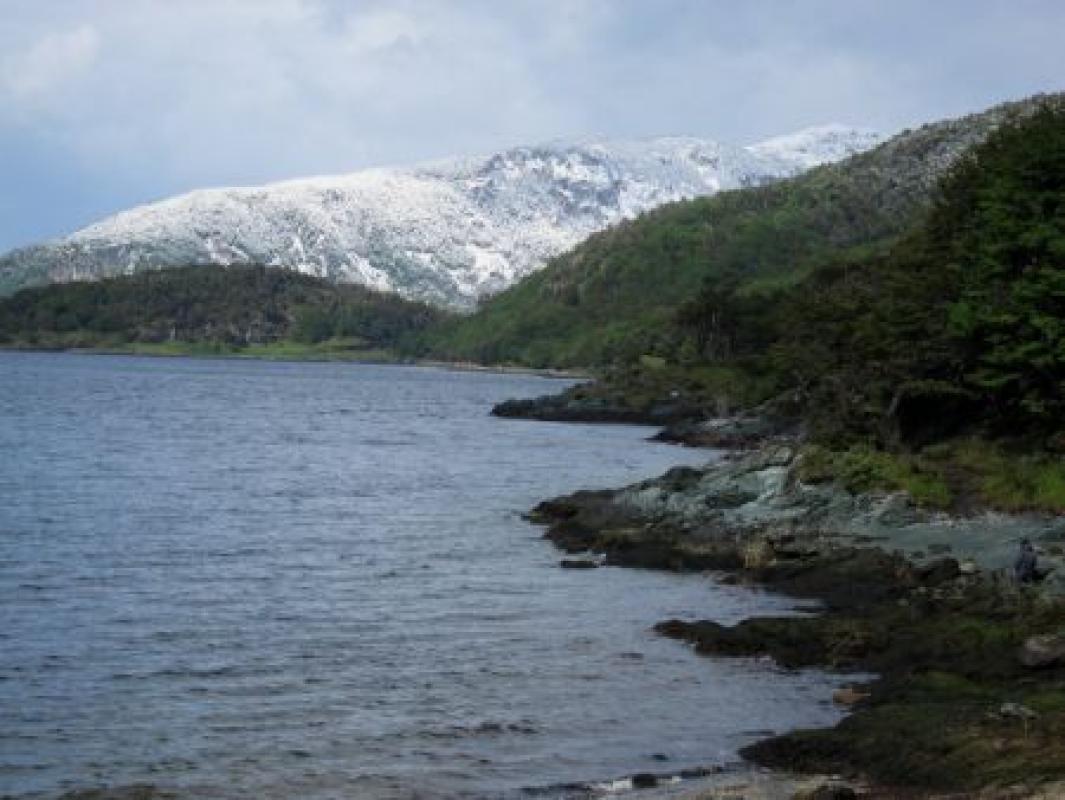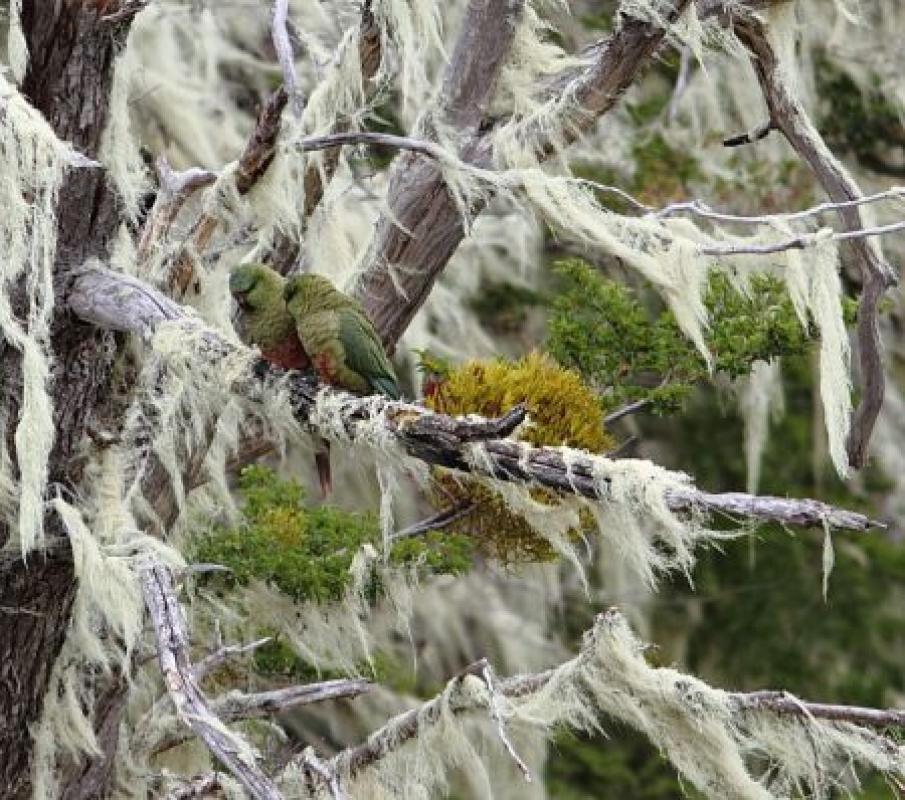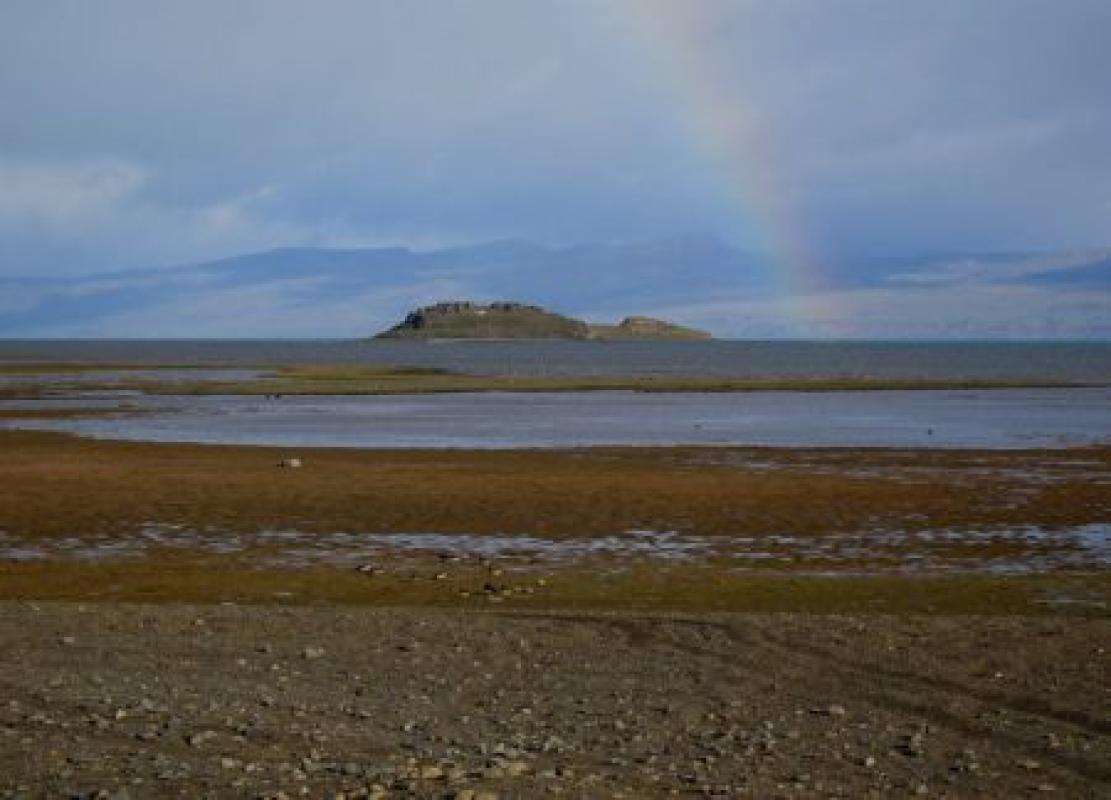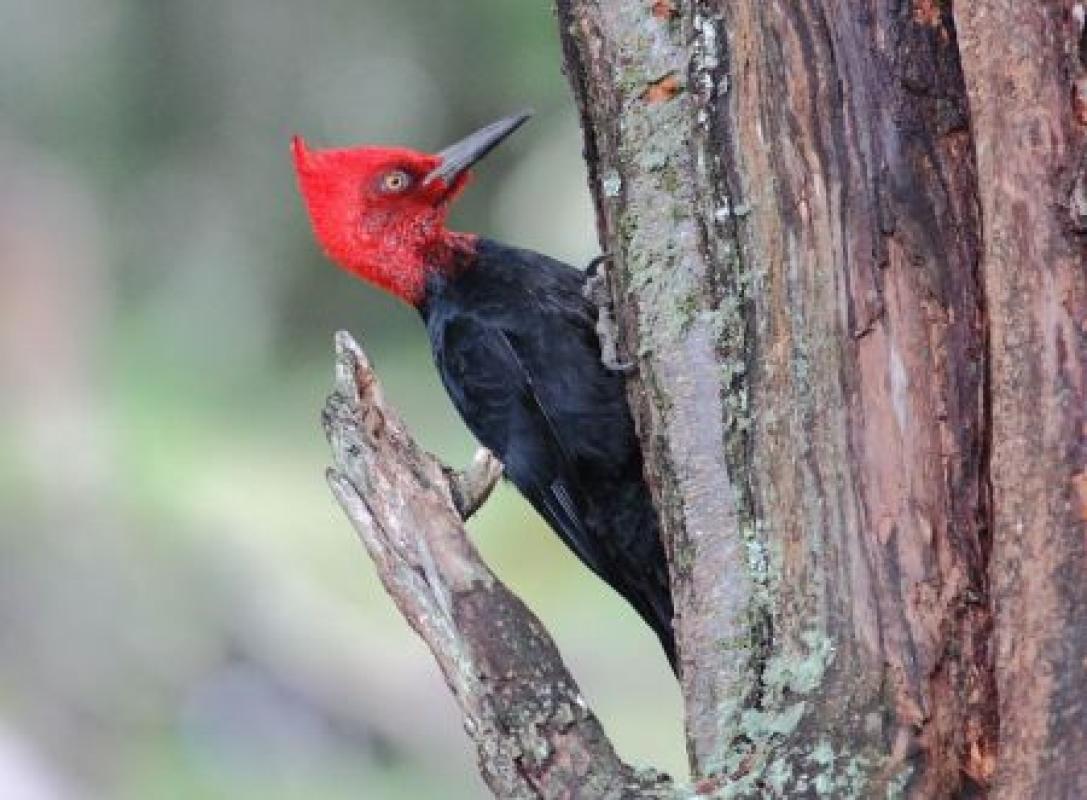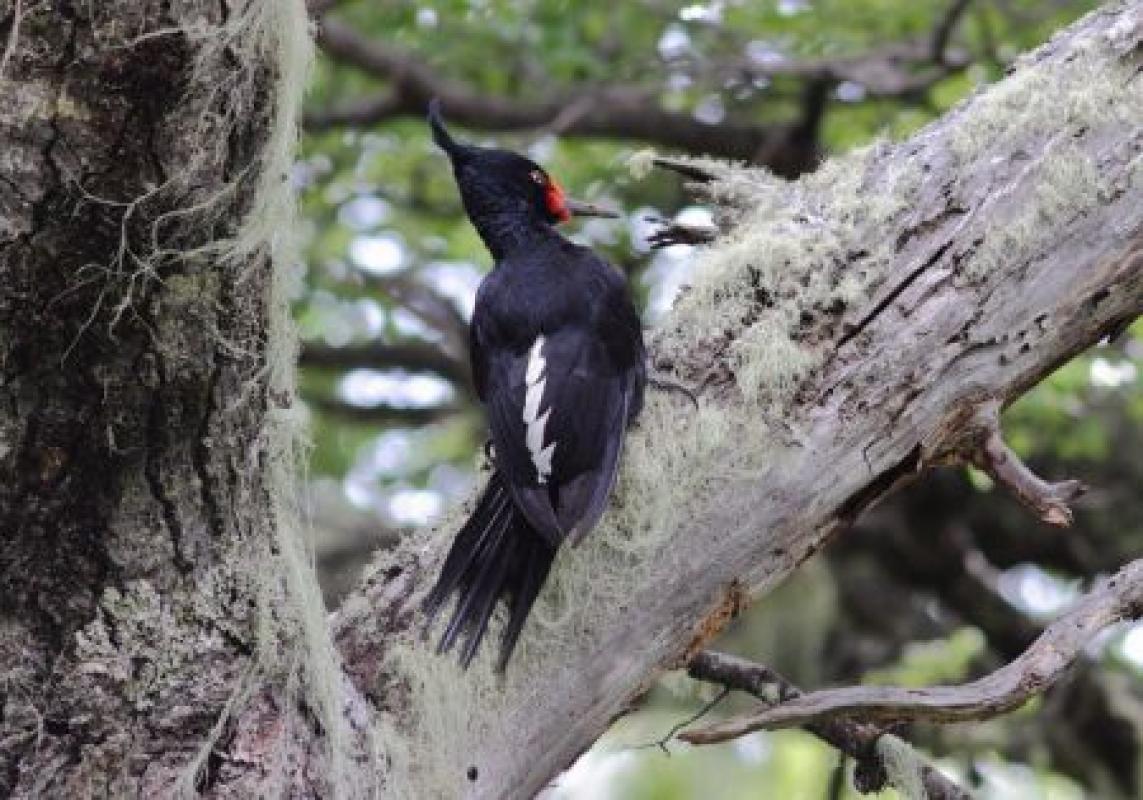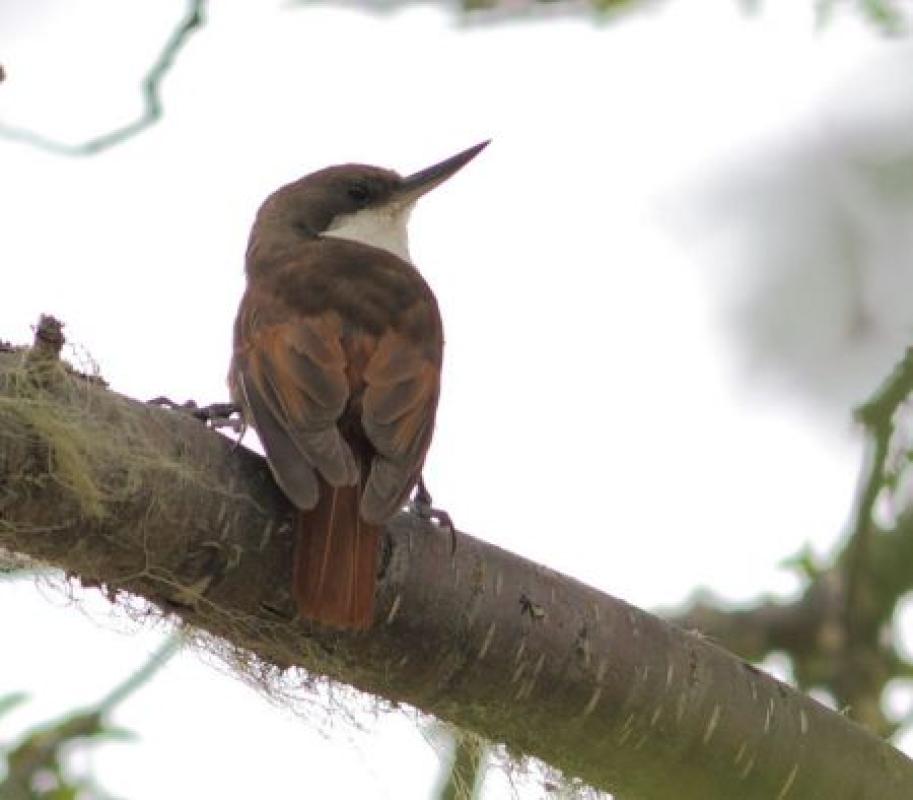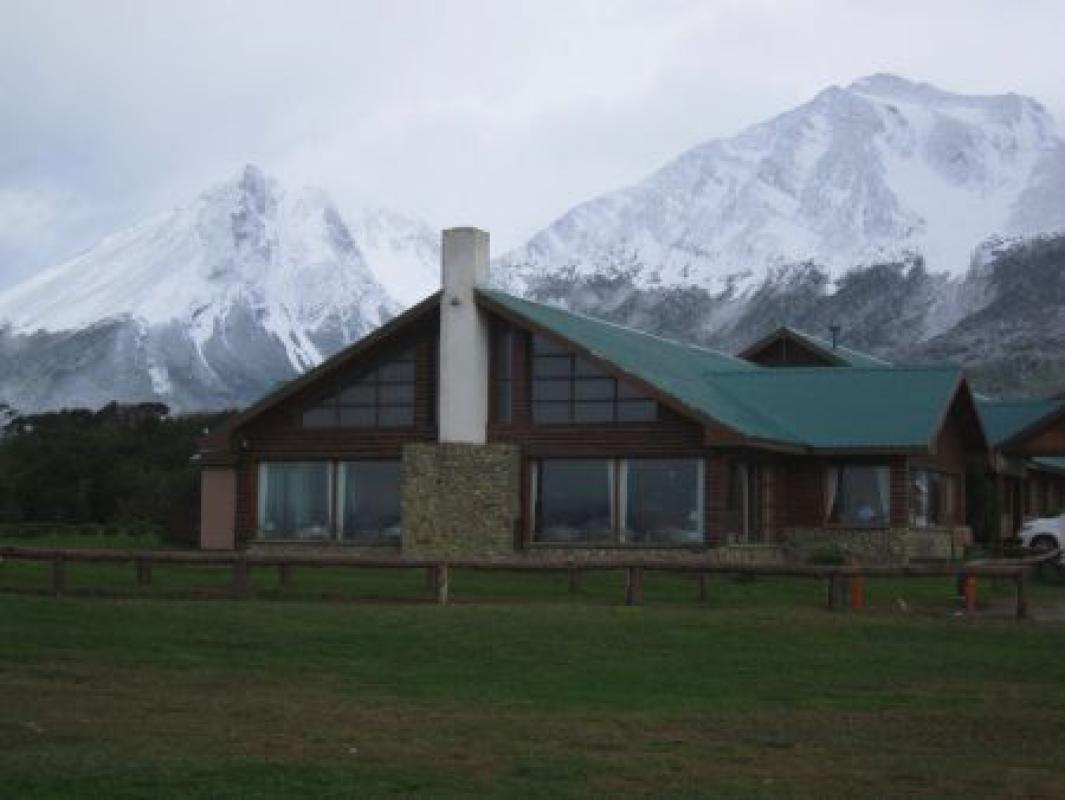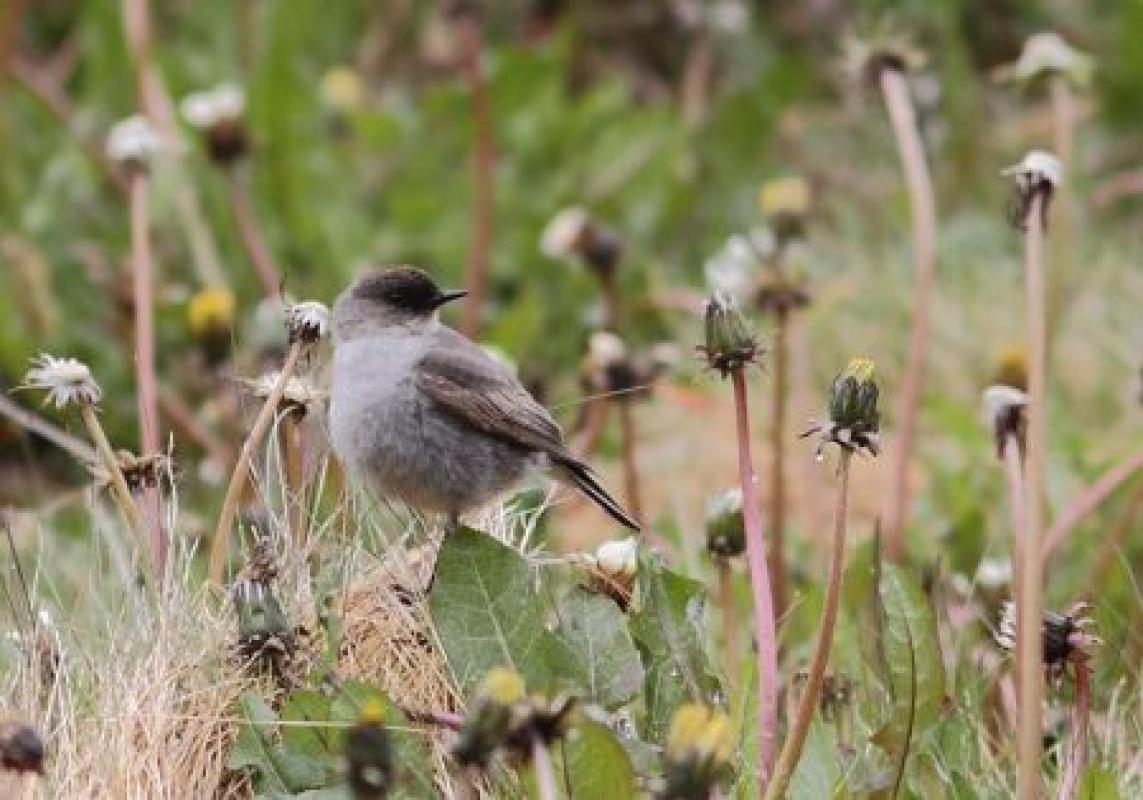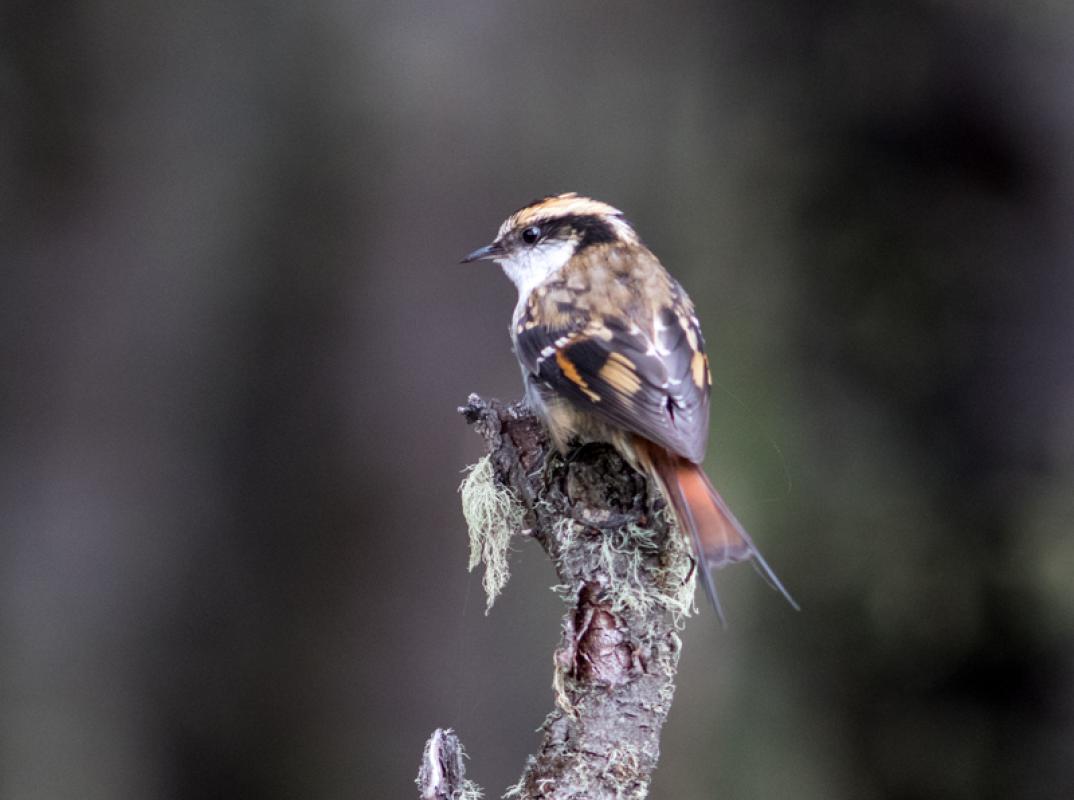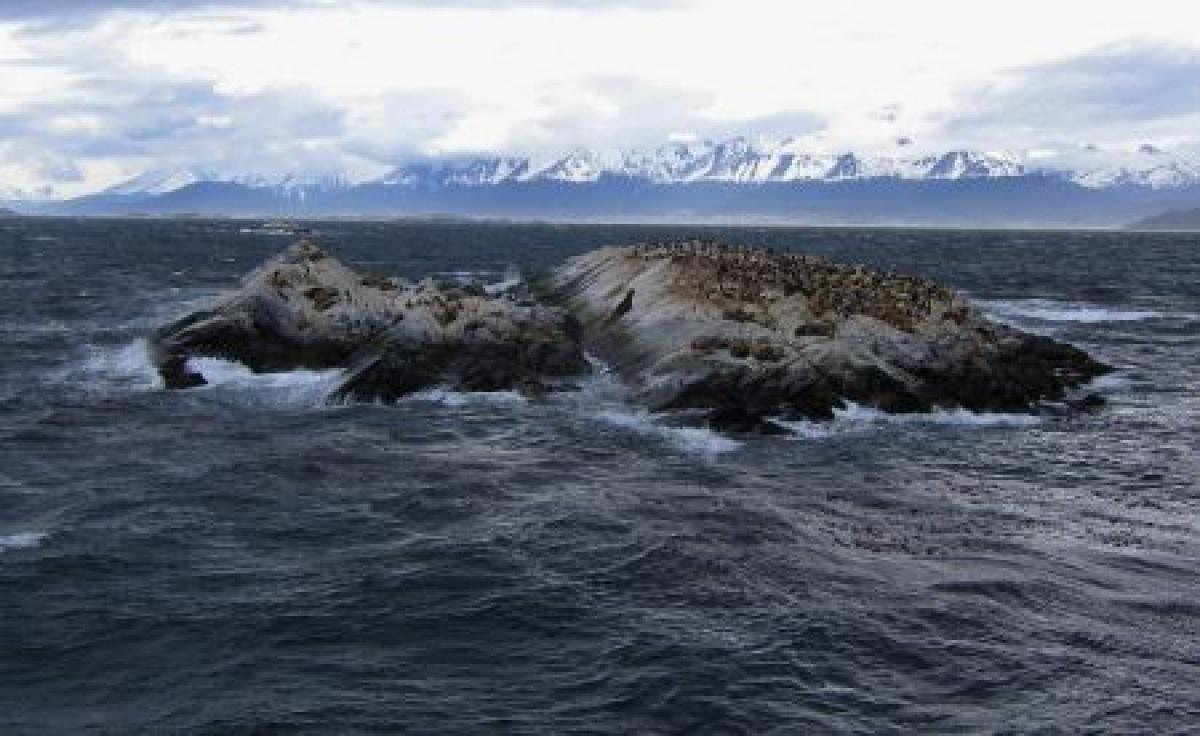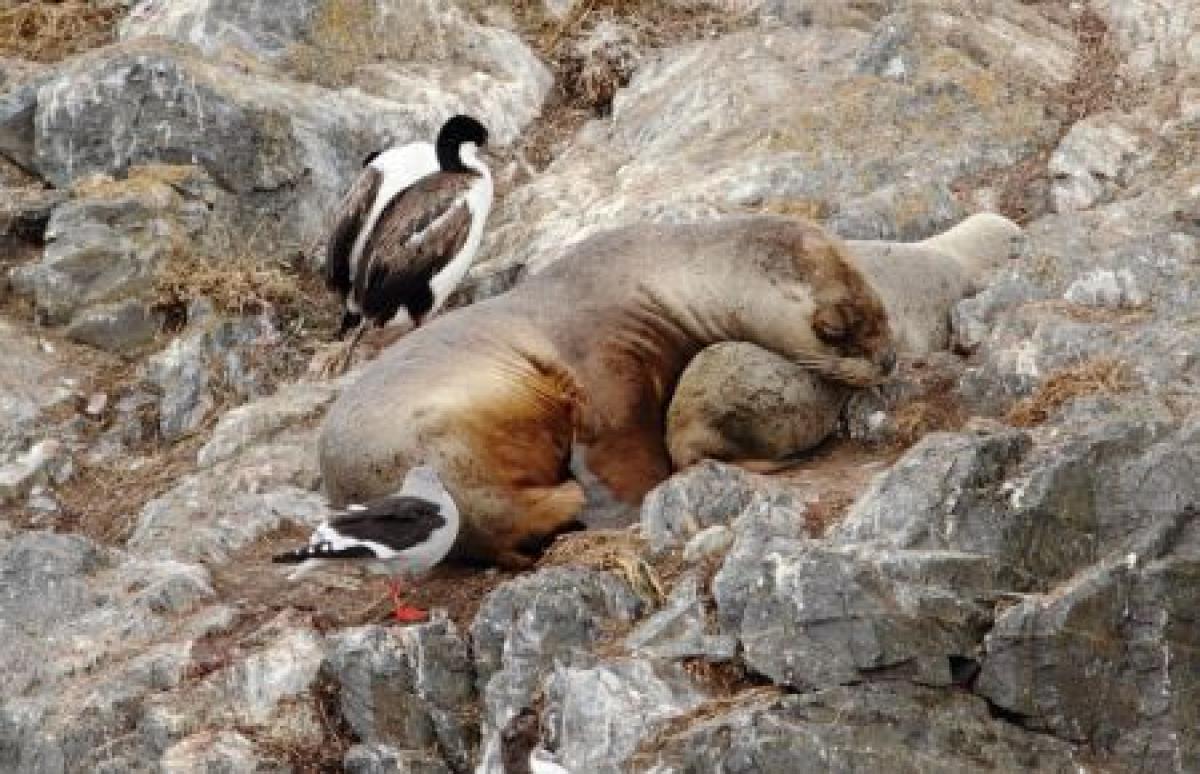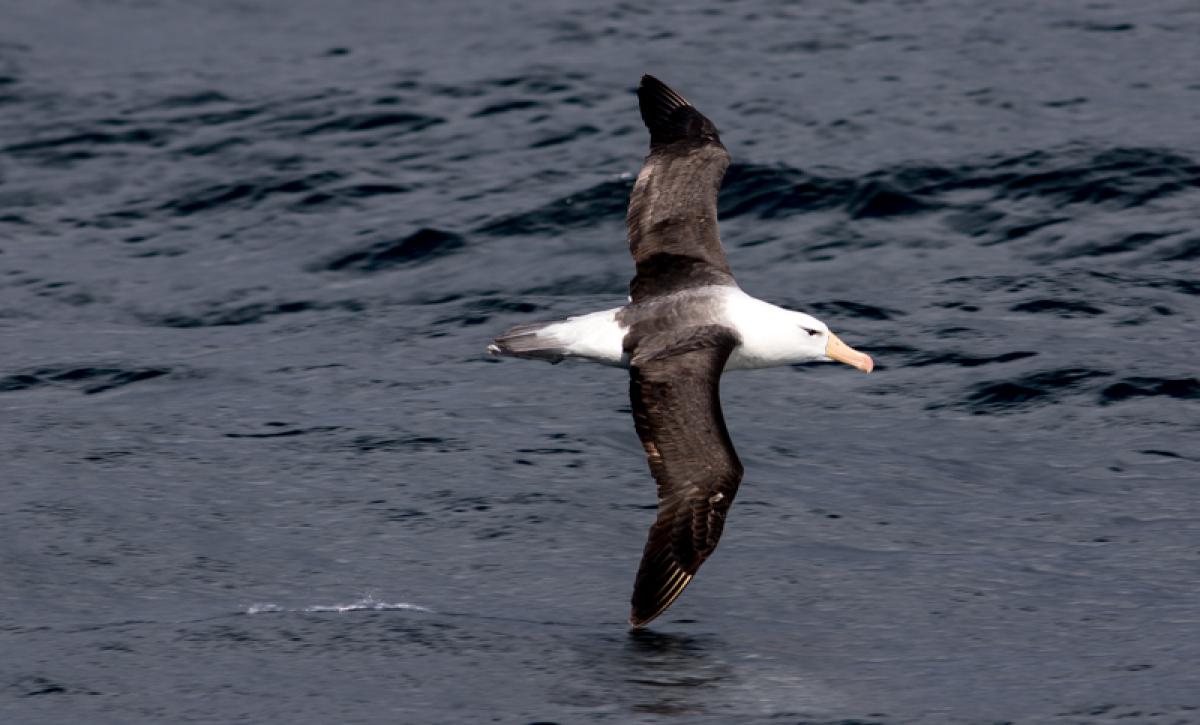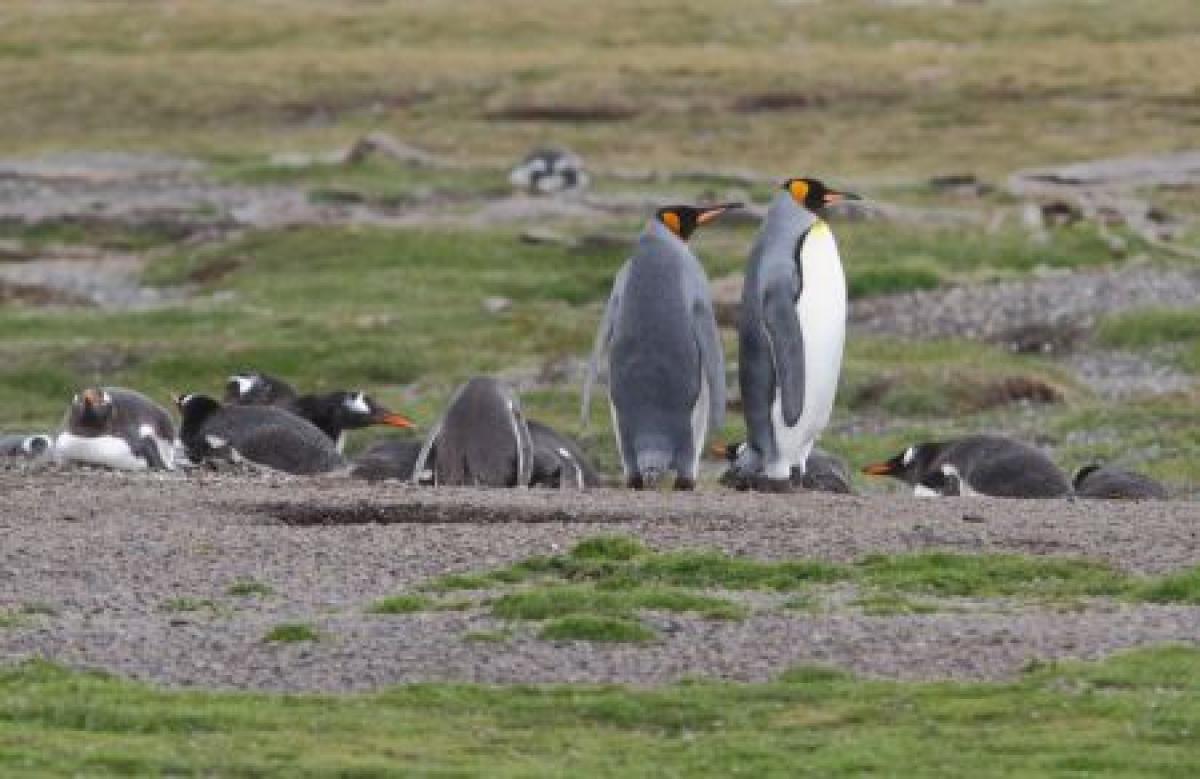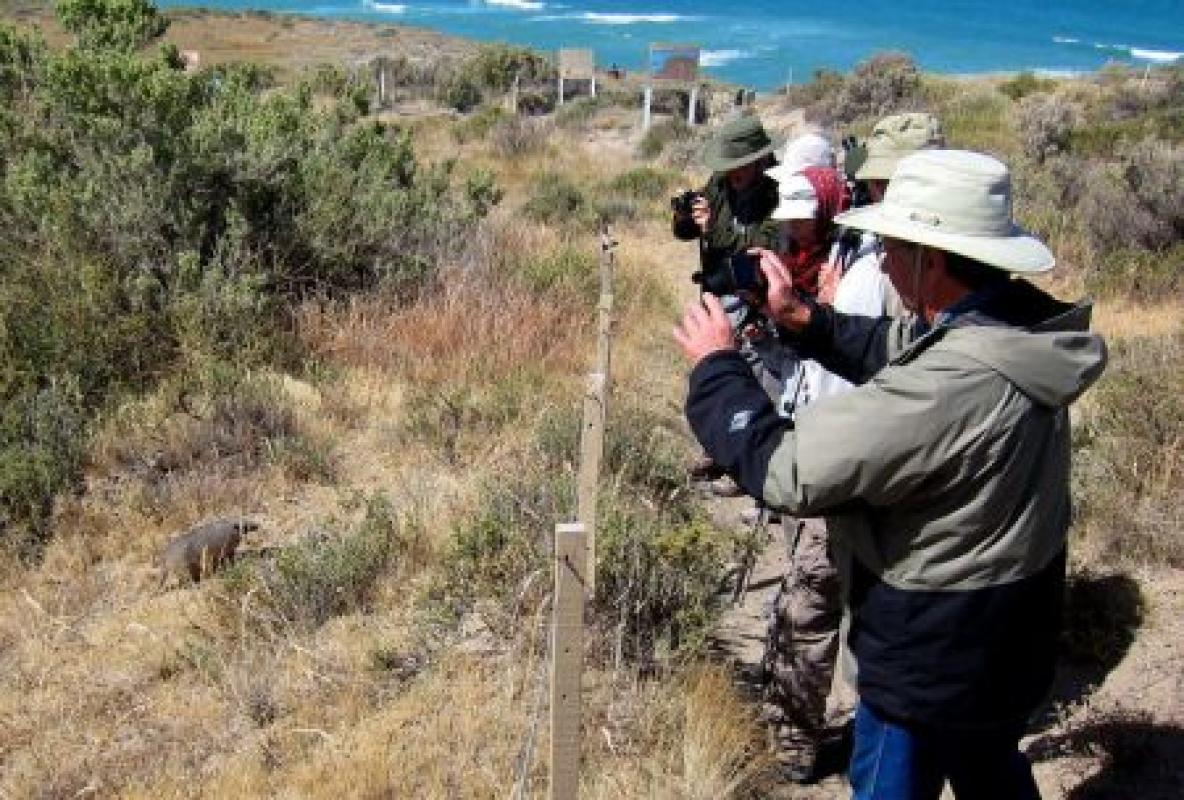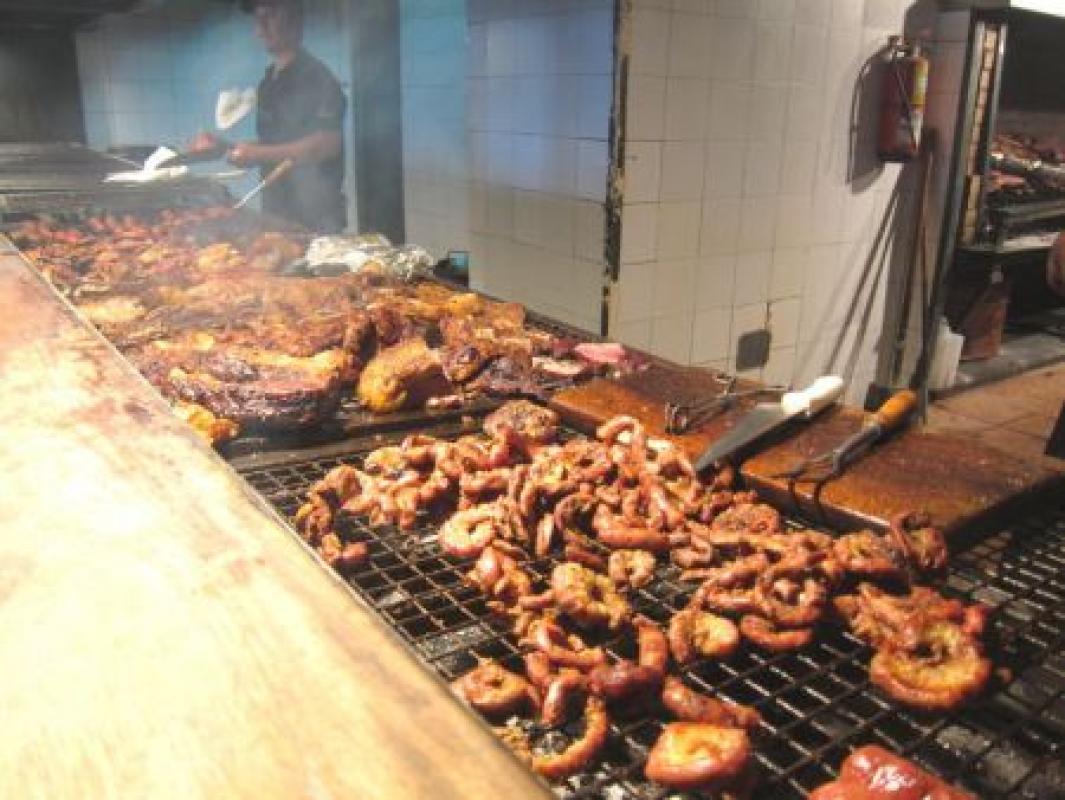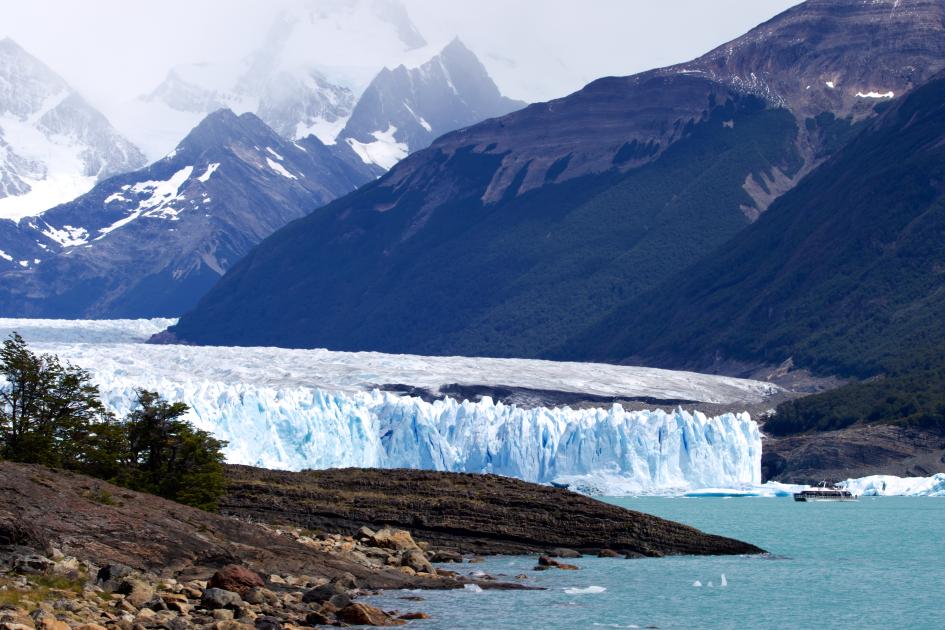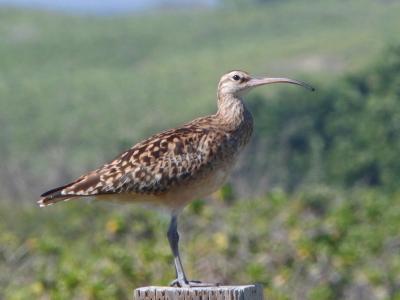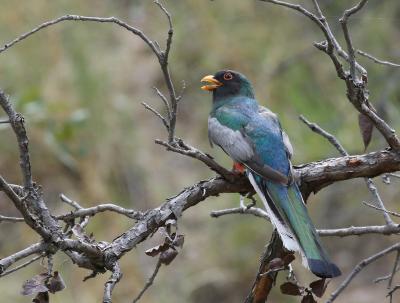Argentina: The South
Pampas, Patagonia and Tierra del Fuego
-
Jan 4-18, 2026
Jake Mohlmann and Mario Mosqueira
-
Oct - Nov, 2027
Jake Mohlmann and Mario Mosqueira
2026
Single Room Supplement $790
2027
Tour Price to be Determined
2026
Single Room Supplement $790
2027
Tour Price to be Determined
Argentina contains a greater variety of habitats than any other South American country. Stretching from the sub-tropical forests around Iguazú Falls to the sub-Antarctic island of Tierra del Fuego, the landscapes are as varied as one could wish, and the birds are similarly diverse. We’ll start in the pampas southeast of Buenos Aires, home to countless waterbirds and raptors, and move south to explore the Valdez peninsula, quintessential Patagonia with dry stony plains covered in xerophytic bushes and dotted with tinamous and rheas, and remote shingle beaches that are refuge for elephant seals and sea lions, and colonies of seabirds. We’ll then visit “the land of fire,” Tierra del Fuego, where we’ll look for Magellanic Woodpecker in magnificent southern beech forests and sail down the Beagle Channel among albatrosses, penguins, and snow-capped peaks, and conclude in Los Glaciares National Park searching the forests and steppes for birds ranging from seedsnipe to sierra-finches, and marveling at the beauty of the Perito Moreno Glacier.
Day 1: The tour begins late morning in Buenos Aires. After lunch, we’ll visit the wetland reserve of Costanera Sur, established on reclaimed land very close to the city center. Depending on water levels, this reserve may hold a good selection of waterbirds, including White-tufted Grebe, Whistling Heron, Lake Duck, and sometimes the rather local Masked Duck. White-winged, Red-gartered, and Red-fronted Coots form groups and Plumbeous Rails nest among the aquatic vegetation. Nanday Parakeets may join the flocks of Monk Parakeets that chatter in the surrounding trees. Night in Buenos Aires.
Day 2: We’ll depart for San Clemente del Tuyu, a coastal resort southeast of Buenos Aires. Here we’ll explore many different habitats including coastal, wetland, and pampas areas. Night in San Clemente.
Day 3: After an early morning visit to San Clemente harbor to look for the endangered Olrog’s Gull, we’ll explore nearby Punta Rasa, an area of sand dunes and salt marshes. On the sandy beaches and mudflats, we could encounter flocks of waders, including American Oystercatcher, hundreds of White-rumped Sandpipers, large flocks of wintering terns, including a few local Snowy-crowned Terns, and groups of graceful Black Skimmers. In the reeds and rushes around the salt marsh we may see Bay-capped Wren-Spinetail and Long-tailed Reedfinch. On the edge of town we’ll hope to find Firewood-gatherer, named for its habit of building enormous nests of dry sticks. In the afternoon we’ll explore pampas areas just inland, where we should detect Maguari Stork, Yellow-billed Pintail, Rosy-billed Pochard, Southern Screamer, Snail Kite, Guira Cuckoo, and possibly Scarlet-headed Blackbird, among many others. We’ll also search for Greater Rhea, Spotted Nothura, Silver Teal, and the elusive South American Painted Snipe. Night in San Clemente.
Day 4: We’ll depart early as we have many stops including a reed-fringed canal where we’ll hope to encounter Stripe-backed Bittern, Black-headed Duck, both Curve-billed and Sulphur-bearded Reedhaunters, Wren-like Rushbird, Warbling Doradito, and Many-colored Rush-Tyrant. Our day’s focus will be on species that inhabit the more wooded areas, including Dark-billed Cuckoo, Freckle-breasted Thornbird, and Black-and-rufous and Black-capped Warbling Finches. Long-winged Harrier may fly by as we look for Giant Wood Rail and any other pampas birds we may have missed during our time in San Clemente. We’ll return to Buenos Aires in the late afternoon for our flight to Trelew in northern Patagonia. Night in Trelew.
Day 5: We’ll visit the vast Magellanic Penguin colony at Punta Tombo. The colony is a reserve, but carefully roped-off walkways allow superb viewing and photography. The bay beneath should hold a few Great Grebes in their attractive breeding plumage, and it’s here that we’ll look for the White-headed Steamer-Duck, a recently split species of very limited range. Southern Giant-Petrels cruise back and forth offshore, and Brown (Southern) Skuas could be scavenging amidst the colony if there are small chicks. In the afternoon we’ll explore several bodies of water around Trelew with hopes of finding Black-headed Duck, White-cheeked Pintail and, in most years, Silvery Grebe. Night in Trelew.
Day 6: We’ll drive to Puerto Madryn, the gateway to the world-famous Valdez peninsula. En route we’ll probably see our first Elegant Crested Tinamous, by far the most obliging of the normally skulking tinamou family, and we’ll look for the unique Burrowing Parakeet, related to macaws and the only species in its genus. We’ll stop in the semi-desert scrub to look for a variety of small passerines, including the local White-throated Cacholote, which builds large stick nests, and we’ll watch out for the distinctive display flights of the Carbonated Sierra-Finch, an Argentinian endemic. We’ll end the day in nearby Puerto Piramides. Night in Puerto Piramides.
Day 7: Starting early, we’ll visit the desert near town to look for a variety of special passerines, including Scale-throated Earthcreeper, Patagonian Canastero, Plain-mantled Tit-Spinetail, and Lesser Shrike-Tyrant. Darwin’s Nothuras could be calling in the scrub, and if we are lucky we might spot one. After breakfast we’ll drive around the peninsula, stopping along the way to look for Darwin’s Rheas, the “monte” endemic Rusty-backed Monjita, Guanacos, Patagonian Foxes, and bizarre Patagonian Hares (Maras). Our destination is Punta Norte, where the beaches harbor Southern Elephant Seals as well as South American Sea Lions with newborn pups. On rare occasions Orcas are seen cruising up and down offshore. Night in Puerto Piramides.
Day 8: We’ll return to Trelew for our flight to Ushuaia on the south side of Tierra del Fuego and adjacent to the spectacular Beagle Channel. We should arrive by midday, giving us time to explore the harbor, where Flightless Steamer-Ducks and Dolphin Gulls are both tame and common and where we’ll be able to study our first Kelp Geese and Chilean Skuas. Night in Ushuaia.
Day 9: We’ll spend the day in Tierra del Fuego National Park, with its beautiful landscapes of southern beech forests, lakes, and rivers. We’ll focus on forest birds, hoping to see the splendid Magellanic Woodpecker, Dark-bellied Cinclodes, White-throated Treerunner, Fire-eyed Diucon, Chilean Swallow, Austral Thrush, Tufted Tit-Tyrant, Black-chinned Siskin, Patagonian Sierra-Finch, and the delightfully entertaining Thorn-tailed Rayadito. We’ll also explore the southern beech forest around Acigami Lake in search of Austral Blackbird, Austral Pygmy Owl, and/or Magellanic Tapaculo. Returning to town in the afternoon, we may have time for a quick peek at the local trash dump, a reliable site for White-throated Caracara, along with scores of gulls and skuas. Night in Ushuaia.
Day 10: We’ll cruise down the Beagle Channel, joining others on a large catamaran for what is primarily a boat trip, although from time to time we’ll pull up close to various islands inhabited by sea lions and seabirds. We should see the graceful Black-browed Albatross along with giant-petrels and skuas. We may be lucky enough to see a Blackish Cinclodes, a recent colonizer to the islands at the mouth of Ushuaia Bay. We’ll stop at cormorant rookeries containing two different species, Imperial and Magellanic, and we’ll also encounter South American Tern. We’ll pull up on shore and overlook a Magellanic Penguin colony that, although small compared to those farther north, attracts from time to time other species of penguin. In recent years a small colony of Gentoos has become established, and there is even the chance of a King!
In the afternoon we’ll begin our drive to Tolhuin, in the middle of the island. We’ll head out across Tierra del Fuego through spectacular mountain scenery with snow-capped peaks, forested slopes and glacial lakes. We’ll stop along the way, especially if there are species we’re still missing. Night in Tolhuin.
Day 11: Today we'll visit the mountains outside of town, reaching areas above treeline. During the hike we'll search for a suite of unique birds: Yellow-bridled Finch, Ochre-naped and Dark-faced Ground-Tyrants, and Gray-flanked Cinclodes. This spot has become a reliable place to look for the highly sought-after White-bellied Seedsnipe and we'll have a chance to see Rufous-chested Dotterels on their breeding grounds. Night in Tolhuin.
Day 12: We’ll fly northwest to El Calafate. After checking into our hotel we’ll visit the shores of nearby Lago Argentino to look for the delightful Magellanic Plover, a species in its own family, which pirouettes in the mud on bubblegum-pink legs. Other birds of interest are likely to include Chilean Flamingo, Cinereous Harrier, Crested Duck, Red Shoveler, Andean Duck, Magellanic Oystercatcher and Two-banded Plover. Night in El Calafate.
Day 13: We’ll spend the day visiting Los Glaciares National Park and the Moreno Glacier, a vast tongue of ice slowly descending from the Andes into Lago Argentino. The Perito Moreno Glacier has been designated a UNESCO World Heritage Site and is a major tourist destination in Argentina. We’ll visit the best viewpoints and may witness chunks of ice calve off into the lake below with a tremendous crash. En route to the glacier we’ll pass through magnificent southern beech forests, open meadows, and farmland, each home to a variety of birds. Highlights will likely include Black-faced Ibis, Ashy-headed Goose, Andean Condor, Black-chested Buzzard-Eagle, Austral Parakeet, Chilean Flicker, and the exotic Rufous-tailed Plantcutter. We’ll also have our best chance here for the scarce Spectacled Duck. Night in El Calafate.
Day 14: We’ll spend more time exploring the vast landscape for species we may have missed the previous day. We’ll be searching as well for Austral Canastero, Great and Black-bellied Shrike-Tyrants, Cinnamon-bellied Ground Tyrant and possibly Gray-belled Seedsnipe. In the afternoon we’ll return to El Calafate for our flight back to Buenos Aires. Depending on the flight schedule we may end up back in the capital with enough time for some local birding. Night in Buenos Aires.
Day 15: We’ll spend the morning visiting one of the productive riverside reserves north of Buenos Aires where we’ll search for Gilded Hummingbird, Checkered Woodpecker, Rufous-sided Crake, Spix’s Spinetail, Diademed Tanager and Solitary Cacique as well as renewing our acquaintance with other Pampas birds we have seen earlier in our trip. The tour concludes this afternoon in Buenos Aires with transfer to EZE for international departures.
Note: The information presented here is an abbreviated version of our formal General Information for Tours to Southern Argentina. Its sole purpose is to give readers a sense of what might be involved if they take this tour. Although we do our best to make sure that what follows here is completely accurate, it should not be used as a replacement for the formal document which will be sent to all tour registrants, and whose contents supersedes any information contained here.
ENTERING ARGENTINA: U.S. citizens are required to have a passport valid on the day of entry and with at least one blank page for an entry stamp. Visas are not necessary for visits of up to 90 days for tourism and business.
As of January 2018, citizens of the U.S., Canada, and Australia no longer need to pay a reciprocity fee, previously paid prior to their departure from home. Citizens of other countries should consult their nearest Argentine consulate for entry requirements. If required by the embassy or visa-granting entity, WINGS can provide a letter for you to use regarding your participation in the tour.
No vaccinations certificates are necessary in order to enter Argentina.
COUNTRY INFORMATION: You can review the U.S. Department of State Country Specific Travel Information here: https://travel.state.gov/content/travel.html. Review foreign travel advice from the UK government here: https://www.gov.uk/foreign-travel-advice and travel advice and advisories from the Government of Canada here: https://travel.gc.ca/travelling/advisories.
PACE OF TOUR: Argentina is a big country so we take several flights and make a few long drives. Typically we’ll have breakfast in our hotel between 6:00-7:00 a.m. (occasionally earlier or later) and then spend the day in the field usually with a picnic lunch and occasionally with a sit-down restaurant meal. Where possible we’ll offer the chance to take time off, but every day offers a full program of birdwatching activities from early morning until approximately 1 hour before dinner, which usually begins at 8-8:30 p.m.
Our tour isn’t particularly strenuous as most of the areas we visit are fairly flat but it does involve some moderate to long walks (½ – 3 mi). Those who want to try for Yellow-bridled Finch, and ground-tyrants in Ushuaia will need to undertake a steep hike uphill through some fairly uneven terrain, sometimes through snow. This hike will likely take all day, though once above treeline it won't be as steep. It will also include walking through wetlands so rubber boots are recommended. If you usually use hiking poles, bring at least one. Collapsible versions work best for storage in luggage and minibuses. The less sure-footed in the party might choose to opt out of this excursion. Argentinean eating hours and habits are different from American ones. Breakfasts tend to be skimpy - often just coffee, toast or a croissant, and butter and jam. Lunches won’t be a problem as many will be picnics. Dinners, however, don’t fit well into our tour schedule. Argentineans eat late. Most restaurants don’t open until 8:00 p.m. and few Argentineans enter them until 9:00 p.m. or later. Meals are regarded as social occasions where friends and family eat slowly and discuss the day’s events, so service is often slow, as that is what most people want. The leaders will always explain to restaurant staff that our group wants to eat early and quickly and this usually works (often we leave the restaurant just as other diners are starting to appear) but be prepared for the occasional slow meal or late finish.
HEALTH: The Centers for Disease Control and Prevention (CDC) recommends that all travelers be up to date on routine vaccinations. These include measles-mumps-rubella (MMR) vaccine, diphtheria-tetanus-pertussis vaccine, varicella (chickenpox) vaccine, polio vaccine, and your yearly flu shot.
They further recommend that most travelers have protection against Hepatitis A and Typhoid. Please contact your doctor well in advance of your tour’s departure as some medications must be initiated weeks before the period of possible exposure.
Altitude: The Pampas and Valdez Peninsula sections will be at sea level. The elevation in Ushuaia/Rio Grande will range from sea level to 2,500 feet when hiking above treeline. In the Calafate section we will be at around 650 feet in elevation when close to the glacier.
Malaria: According to the CDC, the areas that we will be visiting are free of malaria. As the situation changes fairly quickly please contact your physician for the latest advice 4-6 weeks before the start of the tour.
The current information about travelers’ health recommendations can be found on the CDC’s Travel Health website at https://wwwnc.cdc.gov/travel/destinations/traveler/none/argentina.
Smoking: Smoking or vaping is prohibited in the vehicles or when the group is gathered for meals, checklists, etc. If you are sharing a room with a non-smoker, please do not smoke in the room. If you smoke in the field, do so well away and downwind from the group. If any location where the group is gathered has a stricter policy than the WINGS policy, that stricter policy will prevail.
Miscellaneous: Biting insects are not numerous although mosquitoes, black flies and chiggers occur locally; certain mosquito species in Argentina are known to transmit dengue fever, and travelers are advised to check the CDC website for updates.
CLIMATE: Weather in Southern Argentina can vary tremendously from warm and humid in the Pampas and sunny to very cold and wet, especially in Patagonia. Days can be very windy with daily rain possible in Tierra del Fuego, which has a sub-Antarctic climate.
ACCOMMODATION: We’ll be staying in good quality hotels or lodges throughout. All rooms will have a private shower and toilet.
Internet and Mobile Phone Access: Our hotels have reasonably good Wi-Fi connections, though this can vary from year to year. Mobile phone access is very good near our lodging locations but can be null when in the field. Check with your local cell phone provide to see if you are covered in Argentina. Using your phone as normal may be included in your existing plan, or you may be able to buy day passes as needed.
FOOD: Food in Argentina is excellent with meat being a feature (but not a requirement.)
Drinks: Bottled water and/or: a soft drink, a small beer, or small glass of wine is provided at lunch and dinner, as is coffee or tea. All additional drinks or ‘personal’ drinking water for use in your room, etc., are the responsibility of the individual. Bottled water is available in our vehicles during the day.
Food Allergies / Requirements: We cannot guarantee that all food allergies can be accommodated at every destination. Participants with significant food allergies or special dietary requirements should bring appropriate foods with them for those times when their needs cannot be met. Announced meal times are always approximate depending on how the day unfolds. Participants who need to eat according to a fixed schedule should bring supplemental food. Please contact the WINGS office if you have any questions.
TRANSPORTATION: We’ll travel in minibuses or small coaches with local drivers. For the times that we are transferring between sites or going to the hotel or airport, we will use mini-buses where it is possible that some participants may be in the middle seat rather than by a window.
When we use more than one vehicle during the tour there will always be a leader in each vehicle. You must be able to ride in any seat in our tour vehicles.
2025 Narrative
In Brief: Argentina boasts the largest variety of habitats of any country in South America and we did a fantastic job covering as much of four of them as possible. The extensive pampas grasslands and marshes were overflowing with ducks and shorebirds seeking shelter in this land abundant with resources. Highlights here included the regional specialty Olrog’s Gull, showy Black-and-rufous Warbling Finches, and Greater Rheas…the largest bird on the continent. The monte desert around Puerto Madryn awarded us endemic species like an attentive Band-tailed Earthcreeper and Carbonated Sierra Finches in full display mode. On the shores of the massive Valdez Peninsula, Southern Sea Lions were giving birth and Southern Giant Petrels and Snowy Sheathbills were taking advantage of the ephemeral food source provided by this amazing event. The Perito Moreno Glacier in Calafate thundered as active calving of massive ice chunks was experienced. Here a roadside Andean Condor was a great way to start a day, and Austral Parakeets sat right over their nest hole in a giant Nothofagus tree. A Magellanic Plover nest along the shore of Lago Argentino is an experience we’ll remember forever. Our boat trip from Ushuaia down the Beagle Channel took us by nesting colonies of thousands of Imperial Cormorants and up close to passing Black-browed Albatross. Watching a group of highly sought- after Magellanic Woodpeckers utilizing ancient Southern Beech trees was also a major highlight. In all, we encountered 245 species on an unforgettable trip through the southern cone of South America.
In Detail: After our intro meeting, we headed down to the bustling riverside setting that is Costanera Sur Ecological Reserve. We had our first dining experience with typical Argentinian fare, milanesa sandwiches, grilled chicken, and choripan. We were joined by some of the common southern cone species including Grayish Baywing, Shiny Cowbird, Rufous Hornero, Rufous-bellied Thrush, and Chalk-browed Mockingbird. A Green-barred Woodpecker fed in the grass, coming quite close eventually. Monk Parakeets were screeching overhead the entire time, at some points landing within a few feet of the group. Picazuro Pigeons outweighed most of the birds we saw and were seemingly everywhere. A Narrow-billed Woodcreeper was feeding a recently fledged young slowly creeping up a tree. We watched a Brown-chested Martin perched next to an Hornero nest, showing how many species use these old mud nests that are all over the range of this Oven Bird. We strolled to the preserve and immediately started seeing waterbirds like Silver, Brazilian, and Yellow-billed Teal. Lots of Rosy-billed Pochards were nice to see, many with small young following along. A rail was spotted on the edge of the marsh that turned out to be of the Plumbous variety with neon green and red bill. Rufous-collared Sparrows were all over the place feeding in every type of habitat available. Not a bad looking bird for a sparrow! When we hit the woods, we noted a couple Golden-billed Saltators (females, so lacking the bright bill of the males). Red-crested Cardinals gave a good show with bold red heads and crests. In the tops of the submerged trees a Variable Oriole crept through the open branches inspecting what we think may have been a Great Kiskadee nest. The Kiskadees were abundant, perching on anything available to hunt various prey. Also perched in these trees was a tiny Green Kingfisher flopping down into the water for small fish. Working the edge of the pond was a striking black and white flycatcher. Eventually, we all got good views of this Black-backed Water Tyrant quickly foraging for winged insects. A beautiful arrangement of flowering plants was laid out behind us and we monitored both Gilded Hummingbird and Glittering-bellied Emerald taking advantage of this cornucopia of food. Also here, in the trees overhead, were a pair of Streaked Flycatchers working the mid-story of the forest. A Southern House Wren popped out of a woodpecker hole recently excavated by what we thought might be a Checkered Woodpecker. We tracked down a pair of Chivi Vireos, looking very much like the Red-eyed Vireos we were used to from North America. We all sat quietly while waiting for a Sooty-fronted Spinetail to come into view, eventually showing the tiny black dot above the bill it gets its name from. In a pond choked with vegetation, a couple Rufescent Tiger-Herons sat in wait of unsuspecting prey. Other waders showed well including both Great and Snowy Egrets. Limpkin were in constant pursuit of apple snails. A family group had adults showing fluffy young how to perfect the skill. Several Yellow-billed Pintail were mixed in and a loafing Masked Duck was spotted half-submerged in the floating piles of water lettuce. In another field of flowing grasses, swallows were in abundance feeding low over the vegetation. The mass was comprised of Blue-and-White, White-rumped, and many Barn Swallows. A small bird caught our attention, so we took our time to track it down. It turned out to be a very confiding male Masked Gnatcatcher reminiscent of the restless gnatcatchers from back home. We heard the beautiful song of a Southern Yellowthroat and tracked down the songster while it sat at length on an open shrub allowing scope views and videos to be taken. We saw a constant supply of raptors, most of which turned out to be Harris’s Hawks of varying ages. Other large raptor-like birds included both Chimango and Crested Caracaras showing a nice comparison in the size difference between these closely related species. As we waited to go back to hotel, a pair of White-eyed Parakeets perched in a tall snag allowed scope views of our third species of parakeet of the day.
The next day after breakfast we loaded up and headed east to make our way to San Clemente del Tuyu on the Atlantic Coast. En route we stopped occasionally as new birds kept popping up. At one rest stop, a family of Guira Cuckoos perched in the subcanopy of the low trees. These giant birds are reminiscent of Hoatzins in looks, and not very shy. A few Spot-winged Pigeons were perched overhead showing the spots on their wings and pale eyes nicely. A couple Screaming Cowbirds allowed close inspection to distinguish them from the more common Shiny Cowbird. Fork-tailed Flycatchers were in constant supply along the roadsides with long flowing black streamers for tails. As we approached the coast, we got out to stretch our legs along a dusty 2-track. A White-crested Tyrannulet shot back repeatedly across the road in front of us and eventually we all got good looks. Another flycatcher with bright yellow head and chest perched atop a small tree. We were excited to see this Yellow-browed Tyrant pair sally for insects. In contrast, a bright red bird with black mask was also nearby. The striking Vermilion Flycatcher male hung on while the winds of the Atlantic swept by. A mass of sticks in a tree revealed itself as belonging to a Freckle-breasted Thornbird. The bird sat for a long time just under the nest preening, unbothered by our presence. At a bridge we watched a pair of adult Sooty Tyrannulets feed a recently fledged young. Also here, a Nine-banded Armadillo came in for a drink in the heat of the day. We had our first traditional lunch in Argentina: empanadas with various fillings. Every region claims to have the best empanada, so we looked forward to judging for ourselves.
We made our way further east and stopped at a fruitful roadside marsh. A Lake Duck dove repeatedly amongst the floating vegetation. Gigantic Southern Screamers stood as lookouts on the edge, yelling loudly as we approached closer. A small group of Chiloe Wigeon were a bit flighty but allowed good looks at this handsome waterfowl species. Working the bullrushes, a Wren-like Rushbird slowly picked its way through the vegetation just above the water. This species is similarly patterned to our Marsh Wren from North America and fills a similar niche here. We enjoyed watching a Coscoroba Swan, a jumbo white goose-looking swan with bright pink bill fitting somewhere in the family tree. A roadside post with a bump on top turned out to be a Burrowing Owl. The adult owl was watching out for danger while its brown fuzzy young sat at the entrance of their ground holes ready to retreat at little notice. Just before arriving to town, we spotted the largest bird in South America – a male Greater Rhea slowly strolled through the grasslands just behind a pair of its young, about 1/3 of his size, replete with fuzzy gray plumage. A dinner of local flat fish was enjoyed by all, as well as some delicious malbec that this country is famous for.
In the early rays of the next day the light couldn’t be better for watching birds in the port. Hundreds of White-rumped Sandpipers foraged in the mud alongside numerous Hudsonian Godwits. Both of these birds traveled an extremely long way from their Arctic breeding grounds to come to the fertile tidal estuary laid out before us. Nearly as abundant were Lesser Yellowlegs which towered over the nearby sandpipers with long bright yellow legs and lightly dotted backs. These shorebirds sat tall, but paled in comparison to the long-legged Black-necked Stilts foraging nearby. A single Spotted Sandpiper bobbed along the base of the breakwater and a couple pairs of American Oystercatchers flew by, tooting in unison as they went. Huge Maguari Storks sat shoulder-to-shoulder with the slightly smaller Wood Storks. These birds made the normally sizeable Cocoi Heron look small by comparison! Another large wader just waking up and feeding were long-legged Chilean Flamingos sweeping their upside-down heads from side to side, sifting the mud through their beaks. The dilapidated boats had seen better days but were the perfect perches for a few Black-crowned Night Herons of various ages. Around the bend a group of Red Shovelers were slowly walking along the tide line sifting through the flats. Large dark-backed Kelp Gulls stood in small groups interspersed with more common and much smaller Brown-hooded Gulls of several plumages. A few Gray-hooded Gulls were eventually picked out of the mix, and one showed their lighter hood and pale eyes nicely in comparison to its darker-headed cousins.
After breakfast we headed out to Punta Rasa, a preserve protecting pristine coastal tidal marsh with salt and pampas grasses interspersed amongst the winding tidal rivulets. A walk along the road here produced a cute Long-tailed Reed Finch perched on a feathery stalk emerging from the bunch grass. In close succession was the small spike-tailed furnariid Bay-capped Wren-Spinetail. This tiny bird showed extremely well as it repeatedly emerged from the short Spartina grass it is closely tied to. Another small bird living in this windy salt land is the Warbling Doradito. A pair of these small flycatchers worked low through the marsh grass coming in to inspect our group. A unique song caught our attention. It was being emitted by the large in comparison Great Pampa Finch. This gorgeous finch shone in the sun with bright orange bill and olivine wings. A chatting Grass Wren sang its heart out, somehow hanging on to a grass sprig in the windy environment. We made our way out to the vast mud flats at the point and hit the low tide perfectly.
A major target here was Olrog’s Gull, of which we found 12 sleeping together on the beach. Terns were plentiful with the large Royal Terns for a nice size comparison with the numerous ghostly Snowy-crowned Terns, as well as scads of Common Terns which have a good-sized wintering population in the area. An all-white bird came up and over from behind. When it landed, we were excited to see it was a Snowy Sheathbill! Given the distance, heat haze was an issue, but the stark white plumage was unmistakable. Before leaving this area, we were able to pick out a yellow-billed “Cayenne” Sandwich Tern amongst the flock, going over differences in the subspecies of this interesting Atlantic seabird.
Outside town we visited a private estancia giving us a chance to take our time away from busy roads to enjoy the wet grasslands. Shorebirds were plentiful, with American Golden-Plovers, White-rumped Sandpipers, and Southern Lapwings being the most common. Our only Pectoral and Stilt Sandpipers of the trip gave us a good show here. A major highlight was getting up close and personal with lots of Buff-breasted Sandpipers as they slowly picked their way across the short grass fields. At a nearby reed-fringed canal a Sulphur-bearded Reedhaunter eventually posed, showing its orange throat dot. Black-and-rufous Warbling Finch also showed well, as did a male Scarlet-headed Blackbird perched in the cattails. A male Double-collared Seedeater landed very close and sang for a while much to our photographers’ delight. One of the best birds of the trip was creeping its way through the marsh. There really is nothing like the Many-colored Rush Tyrant, a small colorful flycatcher that sometimes emerges from the depths of the wetlands. Along the canal a group of Black Skimmers fought the wind, trying (but failing) to feed by their usual method, instead having to splash down in the water like terns. Before leaving town, we stopped by a park with lots of big trees and flowering bushes being well watered. Our main target here was White-throated Hummingbird which we saw well. It was feeding on pink flowers and chasing other hummingbirds like a racecar driver, somehow avoiding all possible obstacles. Occasionally it would sit high up in the tree singing out its unique song. A Blue-and-Yellow Tanager high in a monkey puzzle tree glowed in the morning light. We stopped just outside town to search for a family group of Firewood Gatherers. Their large stick nests were noted, and at least four birds flew back and forth across the road perching on the small shrubs with nests. A walk down a dusty 2-track on the outskirts of town produced multiple Bearded Tachuris, some in display flights. Many White-browed Meadowlarks were singing and displaying, as well as scores of Grassland Yellow-Finches. Brown-and-yellow Marshbirds weren't shy, perching within 10 feet of us. A Spotted Nothura was seen very well as it kept running down the road switching between tracks. Long-winged Harriers were in good supply, constantly scaring birds up birds into the air.
Next on the agenda was flying to Puerto Madryn and exploring the famed Peninsula Valdez. At a random roadside stop in the rolling hills of creosote a surprise Yellow-billed Tit-Tyrant was spotted shooting back and forth amongst the wind-blown monte plants. A black bird on the hilltop caught our attention and we were able to track down the endemic Carbonated Sierra Finch. The male conducted its display flight for all to see, impressive in the windy conditions. Our first stop was Punta Piramides which harbors a large colony of Southern Sea Lions. New black pups were being born, and the afterbirths were voraciously consumed instantly by the patiently waiting Kelp and Dolphin Gulls. Snowy Sheathbills picked through the breathing piles of fur for morsels, and Southern Giant Petrels took advantage of the windy conditions and flew by the cliffs at eye level. Magellanic Cormorants took breaks resting on the exposed sea walls. High pitched whistling calls revealed a pair of Blackish Oystercatchers blending in nicely with the dark rocky coastline.
We then drove east out to Caleta Valdez passing large salt flats. While having lunch someone came running up the path yelling ORCAS! We never saw Mario move so fast. He instantly ran out to see the sea mammals, with us close behind. The mother was teaching her calf how to hunt for elephant seals using a technique unique to the orcas of this region, where they nearly beach themselves in pursuit of prey on the shore. After witnessing history, we drove a little way down the road and got our first pictures of Magellanic Penguins. A small colony resides on the shores of Caleta Valdez and allowed us to get 6 feet away, the recommended distance to have between you and them. On our way back to Puerto Madryn we stopped briefly to see if we could get another target bird for the list, and it didn’t take long for a Band-tailed Earthcreeper to pop up on a roadside fence post, sitting for a welcomed long time.
The next morning, just after pulling away from our hotel a dark bird with orange beak and legs caught our attention. We pulled over to take in views of the Chihuango Thrushes plucking worms from the manicured park lawn. Oddly, a young Austral Thrush was near them, though not being fed by the adult birds with full crops. We drove along the beach stretched for miles now at low tide. A group of American Oystercatchers was huddled together and three Cayenne Sandwich Terns allowed close inspection. Groups of Great Grebes floated just offshore, and a flock of hundreds of gulls was comprised of Brown-hooded and Kelp. A large reservoir just outside of town was bustling with waterfowl. Amongst the thousands of Red Shovelers, lesser numbers of Yellow-billed Pintail and Teal swam together. Dozens of male Lake Ducks were displaying to females in pairs. A coot trifecta included White-winged, Red-gartered and a single Red-fronted. The only Black-headed Duck of the trip was picked out of the mass with its low profile, dark head, and pink-based lower mandible. Over 100 Chilean Flamingos appeared as pink clumps here and there. It was a treat to see them fly by very close. A single White-tufted Grebe was picked out of the more common Patagonian Silvery Grebes that dotted the surface. Some exciting birds located in the scrub surrounds included the endemic White-throated Cacholote family coming in for close inspection, endemic Patagonian Canastero showing dark tail nicely, and assertive Greater Wagtail-Tyrant poised and ready to go.
We traveled south of town to Punta Loma where another South American Sea Lion colony was lively with activity. Hundreds of Magellanic Cormorants were nesting on the cliffs here, strategically picking a location out of the howling winds. We were able to stand within a flourishing South American Tern colony with hundreds of screaming terns wheeling by through the crowd bringing fish back to waiting mates and tiny chicks. To end our day, we searched several areas and eventually found a major target for the trip when the bus came to a screeching halt after Mario called out “PARROTS!”. A group of Burrowing Parakeets were foraging in the fruiting Lycium shrubs. Mario’s Macaws, as Mario likes to call them, nest in the limestone cliffs in the area and move around in groups like this in the post-breeding season. These birds are extremely colorful and we noted how they sport the same colors as another of our other favorite birds of the trip, the Many-colored Rush Tyrant.
We headed south a couple hours to Punta Tombo, a Magellanic Penguin colony on the Patagonian Coast boasting 180,000 nesting pairs of these otherwise pelagic birds. En route we enjoyed seeing roadside Lesser Rheas and a group of five Burrowing Owls at attention watching us pass. We stopped to inspect a flock of birds that turned out to be our only Mourning Sierra Finches of the trip. Also in the flock were several Diuca Finches with the easiest scientific name to remember (Diuca diuca). At Punta Tombo we were immediately met as we began our hike by sneezing bushes with family groups of Magellanic Penguins resting underneath. The chicks were quite large at this stage mostly resembling the adults but clearly were inexperienced in most aspects as they fumbled around clumsily navigating the desert landscape. Some of these adult birds must walk up to three kilometers inland after feeding for 24 hours to bring the awaiting begging young fresh fish to consume. As we approached the sea, some of us watched a Lesser Shrike-Tyrant hop from bushes to the ground in search of insects. Brown Skuas patrolled the penguin colony looking for any chicks small enough to snatch up, or perhaps to feed on deceased young that perished in the recent rain event. At the end of the trail humongous Southern Giant Petrels were cruising up and down the beach, sometimes at eye level. A couple family groups of the endemic White-headed Steamer-Ducks were spotted just offshore with miniature-sized young in tow.
After we left a Gray-bellied Shrike-Tyrant was spotted along the road allowing long scope views, and later an Aplomado Falcon shot by and perched on a tall shrub jutting above the landscape. We stopped at another scenic beach and walked down to the water. A few Southern Elephant Seals were loafing on the beach and allowed quite close approach, unbothered by the small in comparison humans taking pictures of these giant beasts. Our walk got us quite close to a resting pair of White-headed Steamer-Ducks and group of preening Cayenne Sandwich Terns yet again. Just inland we stopped to watch a male White-winged Black-Tyrant repeatedly hop up and down on its prominent perched displaying its eye-catching white wing patches. Just before getting back to our hotel in Trelew for the night, we made one last stop to admire another roadside attraction: a Lesser Horned Owl nest with chick and adult, both of which were standing on the ground and seemingly easy to be picked off by any opportunistic predator.
The next day, we flew from Trelew to El Calafate, situated on the southern shores of the stunning blue waters of Lago Argentino. Our first birding outing was a memorable experience. We trekked out along the sandy shores in the extremely strong winds that Patagonia is known for. Gray-hooded Sierra Finches were hunkered down in the lee of the Calafate bushes plucking ripe berries off the branches. Austral Negritos hung on tight while picking insects off the foamy shoreline. With one lift of their wings, they were gone like a bullet out over the water. We made a good effort to get out to a spit where most of the birds were hanging out, but the rain rolled in, so we retreated to the shelter of the van. We relocated to another spot along the bay around Calafate to enjoy some of the waterfowl while we enjoyed another classic Argentinian lunch of empanadas and tartas. The wind wasn’t slowing down, so we decided to head up into the canyons of the steppe to see if we could find an area out of the aggressive wind. As we ascended, a mammal strutting through the low shrubs caught our eye: an Argentine Gray Fox hunkered low out of the wind while surveying its very scenic territory. We managed to find one area high up on the slopes protected from the wind where a Buff-winged Cinclodes was the first bird we encountered upon exiting the van. Soon after it started snowing of all things, adding another layer to the very elemental day we had experienced so far. As the snow fell, some of us managed good looks at a Cordilleran Canastero hopping from shrub to shrub dodging the snowflakes.
After a tasty breakfast the next morning we headed west towards the southern beach forest in the distance. Soon after leaving town a roadside scene turned into one of the major highlights of the tour. An adult Andean Condor sat like a statue right beside the road, dwarfing the otherwise giant Black-chested Buzzard-Eagle perched just down ridge. A bit further down the road a young Buzzard-Eagle sat even closer, and we got to study this barrel-chested long-winged raptor. At a nearby lagoon, we coaxed out an Austral Canastero, which sat perched up on an emergent shrub singing for a while allowing ridiculously good scope views – not an easy task for the normally very active Canastero group. When we started seeing trees we stopped and had a great flock of birds representative of this forest ecosystem. Our first Fire-eyed Diucons perched nicely at eye level sporting bright red eyes and suave gray plumage. White-crested Elaenias started to emerge from the trees, perching high up on snags with bleached white stripe down the top of their heads flared up with curiosity. Austral Thrushes also joined the show, donning dark black caps and speckly bellies. Our day was mostly geared toward exploring the amazing Los Glaciares National Park, the largest national park in Argentina, protecting just over 2,800 square miles of land. Soon after entering we stopped at an area where a Crested Caracara family slowly walked through the picnic zone looking for tidbits dropped by sloppy tourists. Here we found a likely nest hole of an Austral Parakeet. One of the adults sat for 20 minutes just above our heads unaffected by our presence. We stopped at another area flush with blooming fire bushes and the perfect habitat for our next target bird. Eventually a female Rufous-tailed Plantcutter popped up into view and we studied her plumage in detail. The road wound around corners and eventually started to reveal the main attraction here as the massive Perito Moreno Glacier came into view. At an overlook we took our first of many photos of this icy massif and noticed a trio of Spectacled Ducks way down on the lakeshore blending in perfectly with the rocky shoreline.
We took a nice stroll along the shore of the lake taking in the beautiful scenery surrounding us. A couple of Dark-bellied Cinclodes were noted chasing each other around the shoreline, as well as a single Dark-faced Ground-Tyrant. Along the elevated pathway we lucked into pretty good views of a mouse-like Magellanic Tapaculo that ran back and forth through the dense vegetation under our feet. As we rounded the bend the gleaming view of the ice river was laid out before us. After taking countless pictures, we gathered up to head back to Calafate to enjoy one of the famed parilla restaurants overlooking Lago Argentino.
The next morning, we headed east out of town into the wind-swept bunch grass plains of the Patagonian steppe. Shortly we then turned north along National Route 40, one of the most famous roads in South America, stretching over 5000 kilometers running along the base of the Andean Range. We took some side roads in search of the wildlife that call this seemingly desolate land home. Quickly we were lucky enough to spot a group of Tawny-throated Dotterels right next to the road. We exited the vehicle to watch these splendid shorebirds run in bursts across the plains. One pair didn’t seem to mind our presence as we walked out towards them. We quickly realized the reason was a tiny fuzzy young chick that was trying to keep up with the retreating adults. While watching these a low hooting was heard in the distance. Some scanning revealed a squat Least Seedsnipe sitting on top of a large rock, the highest point it could find to watch over its petite kingdom.
While getting stuck on a sandy road isn’t that unusual, we were surprised when our coach came to a halt. Despite a couple digging and pushing efforts it had to ultimately be pulled out with another vehicle. During our break we walked down the road and were delighted to see a huge Andean Condor soaring right over the road. What an iconic scene with this bird gliding in front of the snow-capped Andes, a famous backdrop in local art designs! Along another dirt track we walked along the base of sandstone cliffs and tracked down a family of Rufous-banded Miners, experts at living in this windy environment. On the banks of the nearby stream, a group of Patagonia Yellow-Finches came in for a brief drink. Along the roadway here we had even better views of a male Least Seedsnipe as it crept along the road bank within a few meters of our bus, eventually crossing the road in front of us. We checked out a road running along the northern shore of Lago Argentino with several green wet areas full of Upland Geese. Along a rocky hillside we took time to get great looks at a Spot-billed Ground-Tyrant, admiring how far and wide it flew to forage, ranging from high up on the hill all the way down to the lakeshore and back. Before heading back to town, we made a short trip south to an even windier area where we ran into a pair of Common Miners collecting food. The adult birds took the morsels to a hole in the road bank to some awaiting young. Besides that nest, there were several holes in the bank being used by agile Blue-and-white Swallows somehow managing to get along in the high winds.
We took a stroll along the beach at Lago Argentino first thing the next morning. Right out of the van a family of Flying Steamer-Ducks was spotted sitting on the shore. The light was perfect for photos as we got close to families of Crested Ducks, White-winged Coots, and Upland Geese. Lots of ducks were loafing in the ponds of the reserve including Chiloe Wigeon, Red Shoveler, and both Yellow-billed Teal and Pintail. We took time to get close looks at both Lake and Andean Ducks. The males look nearly identical, but the females are markedly different. We noted the dark faces of the female Andean Ducks compared to the striped faces of Lake. Meanwhile, a small, streaked bird crawled out of an isolated grass patch right next to us. Amazingly, it was a Correndera Pipit of all things! The bird was very comfortable in our presence and allowed a lengthy study of back streaking, facial features, and even toenail length, all of which need to be looked at to identify this similar-looking group of birds. After a while the bird took off up into the sky in display flight and out of sight. Eventually we reached the area we were aiming for and re-found a Magellanic Plover nest that we’d located before. Those who hadn’t seen it previously were excited to catch up with this unique bird as it sat motionless blending in with the similarly colored gravel surrounding it. This odd shorebird is highly sought after, being the only member in its family Pluvianellidae.
After our exciting outing, we hit the dirt roads once again for a change of scenery. As we drove Long-tailed Meadowlarks and flocks of Patagonian Rufous-collared Sparrows flushed from the road edges. Another family of Lesser (Darwin’s) Rhea were spotted as they slowly walked through the fields foraging like a group of ungulates. We walked a while trying here and there for our next target bird and eventually, we found it. The coveted Austral Pygmy-Owl was an incredible bird, sitting out in the open tooting for over 20 minutes as we admired this bold individual. We had been watching a perched Gray-bellied Shrike-Tyrant nearby so weren’t surprised when a Shrike-Tyrant landed right next the owl. Much to our surprise and delight it turned out to be a much rarer Great Shrike-Tyrant. It was amazing how much larger this bird was than the owl, looking like it could destroy it at any moment but politely chose not to. We soaked in the scene for a while, then hit the road again when out of the blue a falcon shot by the front of the van. It turned out to be a pair of Aplomado Falcons that graciously perched in a shrub for us to examine in the scope.
For yet another change of habitat we went back up into the mountainous canyons in search of new birds. We hiked up a grassy valley and immediately were greeted by a Plumbeous Sierra Finch delicately picking grass seeds from the heads. Further uphill a Cinnamon-bellied Ground-Tyrant was spotted way up on the hillside. As luck would have it, eventually it came and landed very close to our group to run around and catch insects in the short grass patch nearby. It was good to get a hike like this under our belts and we noted how it would compare to the hike we had planned for the following day. It was hard to pull ourselves away from this productive region, but we had a flight to catch, to Ushuaia on the banks of the Beagle Channel for another unique adventure.
To say our hotel in Ushuaia is awesome is a complete understatement. Its location on a sandy spit jutting out into the Beagle Channel gives rare perspective, sited at the mouth of the Rio Pipo where fresh water enters the ocean, and where many species of birds unique to this region come to bathe in the clean cool fresh water. Regularly occurring species here include Dolphin Gulls, Baird’s Sandpipers, and the occasional Southern Giant-Petrel shooting by. Several life birds were logged while enjoying dinner in the hotel’s restaurant. One night a pair of Flightless Steamer-Ducks motored by through the white caps of the waves. Another time a male and female Kelp Goose were resting on an exposed sand bar. The first Magellanic Oystercatcher of the trip was memorably spotted from a dinner chair.
We had a long day planned, with a hike into the mountains scheduled first. The terrain up to Martial Glacier was a scenic wonderland of fast flowing streams crashing down the canyon bottom through moss-laden Nothofagus forest, with the watery expanse of the Beagle Channel weaving toward the horizon. As we ascended, the trees got shorter and soon we were above treeline, right where we needed to be for another group of birds. Immediately a group Dark-faced Ground-Tyrants was spotted sweeping over cushion plants catching flies. Nearby, a Gray-flanked Cinclodes worked the wet edges slowly picking through the short grass clumps.
A little further up a family of Ochre-naped Ground-Tyrants were encountered. We watched as the adult birds foraged all over the place for the ever-growing young bird that recently fledged from its nest. Even higher we scored a major target for the area. Initially we heard the male Yellow-bridled Finch singing its melodious song from high up on the scree slopes. Eventually though, it made its way down to our feet, allowing close inspection of its neon yellow plumage that blended in perfectly with the surrounding vegetation.
Our boat trip down the Beagle Channel was epic, not only because the water was flat calm, but because new birds were constantly added against the backdrop of the wind-swept mountains for which the area got its name. Numerous Black-browed Albatrosses floated by along with flocks Chilean Skuas, and nesting colonies of Magellanic and Imperial Cormorants numbered into the thousands. A recent colonizer to the islands here is the Blackish Cinclodes that we saw very well, as it came to drink the fresh water from our boat’s windshield wipers! The penguin colony at the end of the line was filled with not only thousands of Magellanic Penguins, but a bunch of Gentoo as well.
Our next destination was Tierra del Fuego National Park, with its stunning snow-capped peaks and old-growth beech forest. Our main target for the day was getting a look at the notable Magellanic Woodpecker so we began right away in our search. As we were going to get out of the van to begin, we got a radio call that another guide in the park had just heard one of them calling from the woods. We rushed over and immediately were able to hear the ‘wank’ calls of one of the woodpeckers and soon appearing before our eyes were two male birds with bright crimson heads foraging with an all-black, arguably more attractive female counterpart. We relished in this experience. As we were leaving the double knock of the male rang through the forest like a drum. Patagonian Sierra Finches foraged alongside the sprite Thorn-tailed Rayaditos, always encountered in querulous family flocks. High overhead an adult Black-chested Buzzard Eagle sat motionless for what seemed like forever, slowly scanning the landscape for any potential prey. We encountered a mobbing flock of birds containing Austral Thrush, Tufted Tit-tyrant, and Black-chinned Siskins. A new bird for the trip came in to see what was going on – an Austral Blackbird parked itself in the middle of a bush and sang its melodious song. At the end of the path at the terminus of the Pan-American highway we sauntered to the end where a pair of tame Flightless Steamer-Ducks sat on the dark rocks completely disappearing when their orange bills were tucked in. Along one of the rivers meandering through the park, a pair of Spectacled Ducks added yet another waterfowl species to our impressive list so far. We also met ‘George’, the friendliest Southern Caracara in the world, when he greeted us at the campground. During our picnic lunch a male Patagonia Sierra Finch kept us company, clearly used to people giving handouts at this scenic spot. After lunch we walked along Lago Roca whose waters are shared with Chile. A pair of Black-necked Swans took up residence on a backwater cove. At one point we also got extremely close to a Magellanic Snipe that fed for a long time while we observed its foraging strategy. We spent the last few hours of the day soaking in the scenery with slow strolls at various points. Along the Rio Pipo a family of Spectacled Ducks floated down the river, eventually coming up onto the bank for us to see well. One last bird before we left was the nuthatch-like White-throated Treerunner, a unique furnariid haunting these southern beech forests. It was great to finally track down this species that we’d been on the lookout for all day!
On our last day here, we took a final morning stroll around the grounds of our remarkable accommodation. An interesting bird we saw along the river was the “Dusky” version of Black-crowned Night Heron, a much darker variety than the ones further north. We were also thrilled to have a group of Thorn-tailed Rayaditos come in and finally get a great look at these memorable individuals, bold and beautiful with gleaming pale eyebrows and spike-tipped tails. We went into town to check a few spots. Our first was in the freshwater ponds by the harbor, where birds frequently come in from the channel to bathe. Extremely good looks at Brown-hooded and Dolphin Gulls were cherished, as well as the pair of Dark-bellied Cinclodes that swirled its wings around while singing, looking like an 80s aerobics instructor demonstrating how to do arm circles. Not only great for a place to take your trash, but sanitary landfills can be good for birds too as evidenced by the many of the White-throated Caracaras soaring overhead at the scenic dump. The wind started to pick up when we were along the coast road, making it difficult to even stand. A bunch of birds sought harbor from the wind in a cove at a river mouth. We watched multiple Chilean Skuas flying around harassing the resting gulls and a family of Kelp Geese with little gray young close by. Later in the evening we boarded our flight back up to the Federal Capital.
The forecast for our final morning predicted rain and boy were they right! After the first couple hours the rain stopped, and sun came out allowing us to have a great last day. We checked some local preserves dotted around the city. When exiting the van at one stop, we were met by a group of Nanday Parakeets eating fruit of a non-native tree. It was fun catching up with species we’d seen on the first part of our adventure like Limpkin, Snail Kite, and Narrow-billed Woodcreeper. We even added a bunch of new species for the trip. One diverse flock we encountered added Bran-colored Flycatcher, Bluish-gray Saltator, and a complete surprise Red-crested Finch. The male’s neon red crest was glowing on the otherwise crimson bird. A male White-winged Becard sat long enough for us to get great looks, and the male Masked Gnatcatchers were also a feast for the eyes. After our final picnic lunch of hand-made pizzas and local sweets, we tried for and saw a couple Rufous-sided Crakes shoot through the downed grasses chattering their songs in duets. It was great to have our last bird of the trip be a crake, a normally reclusive group of birds that can be very difficult to see.
This fantastic group of participants got along extremely well and made for a very smooth tour that was a pleasure to lead. The weather could not have been better with sunny days and partly cloudy skies. It wasn’t until our last day that it rained enough to prevent some of us from leaving the vehicle. With only eight participants and two leaders everyone’s ability to get on every bird was apparent, something that can be difficult on birdwatching tours. The scenery was changing constantly, as were the birds we encountered. These factors made for an exciting endeavor that I can’t wait to experience again on the next visit to Patagonia!
- Jake Mohlmann
Jake has all the attributes of an excellent leader. His bird finding skills are exceptional. He remains on top of all his responsibilities (the smooth functioning of transportation, accommodations, meals and so on). He manages to, quite effortlessly, stay attuned to the highly differing personalities, needs and expectations of all the clients. He is tireless in his role, endlessly positive and has a wonderful sense of humour. I felt very privileged to have been part of his tour.
- Harry S. on Argentina: The South
Jake was phenomenal! His ability to hear, see, locate, and identify all the birds we encountered was the best I have ever encountered in decades of birding (I now have a life list slightly over 3,000 birds). I would also be remiss if I didn't mention the great contributions by Mario! All in all, this was a truly great all-round trip, not just birding. Spectacular scenery, interesting culture.
- Robert H. on Argentina: The South
Locations and pace were awesome. Excellent WINGS and local guides!
- Charlotte O. on Argentina: The South
Wow! Incredible to experience fabulous birding and so much of a huge country. Jake and Mario were excellent. Knowledgeable and skilled birders. Relentlessly (and respectfully) pursued our target birds. They knew where to look to maximize our time. Patient, thoughtful, and thorough teachers. Responded quickly and effectively to the challenges of international travel amid changing COVID requirements. They did so much "behind the scenes" to ensure everything went smoothly. Excellent support from drivers and local guides.
- Valerie B. on Argentina: The South
Jake is just a phenomenal tour leader; a truly unique combination of incredible birding skills and equally incredible human skills. Ditto for Mario. Their familiarity and experience with the area and the birds, and their incredibly thoughtful and thorough attention to planning and logistical details, made the birding aspects of the trip superbly successful. And the easy, caring, and fun way they interact with each other, each person in the group, the other local guides and drivers who assisted in various locations, and all the other people we interacted with on the trip, made the trip so comfortable and just plain fun. Our local guides Sebastian and Esteban were also exceptional - they added such an important flavor and dimension to the portions of the trip we shared with them.
- Carla D. on Argentina: The South
Jake is the Ambassador for the birds of Argentina. In that role, he combines his birding expertise with his phenomenal organizational skills to create a truly exceptional experience for WINGS clients. I was very impressed by his birding and teaching skills. He is relentless in his pursuit of the birds we all came to see. In addition, no detail of the itinerary was overlooked. He listened to everyone and never disregarded a request or suggestion.
Mario was absolutely tireless in his quest to make the experience smooth and rewarding. He never stopped working to make sure we saw as many birds as possible, was relentless in helping get us through airports, and thoughtful on all the accommodations and food venues. Mario and Jake are an exceptional team!
Erin is beyond organized. She always responds quickly and precisely to questions! Thank you.
- Jean-Christophe B. on Argentina: The South
Maximum group size eight participants with one tour leader; 10 participants with two leaders.

